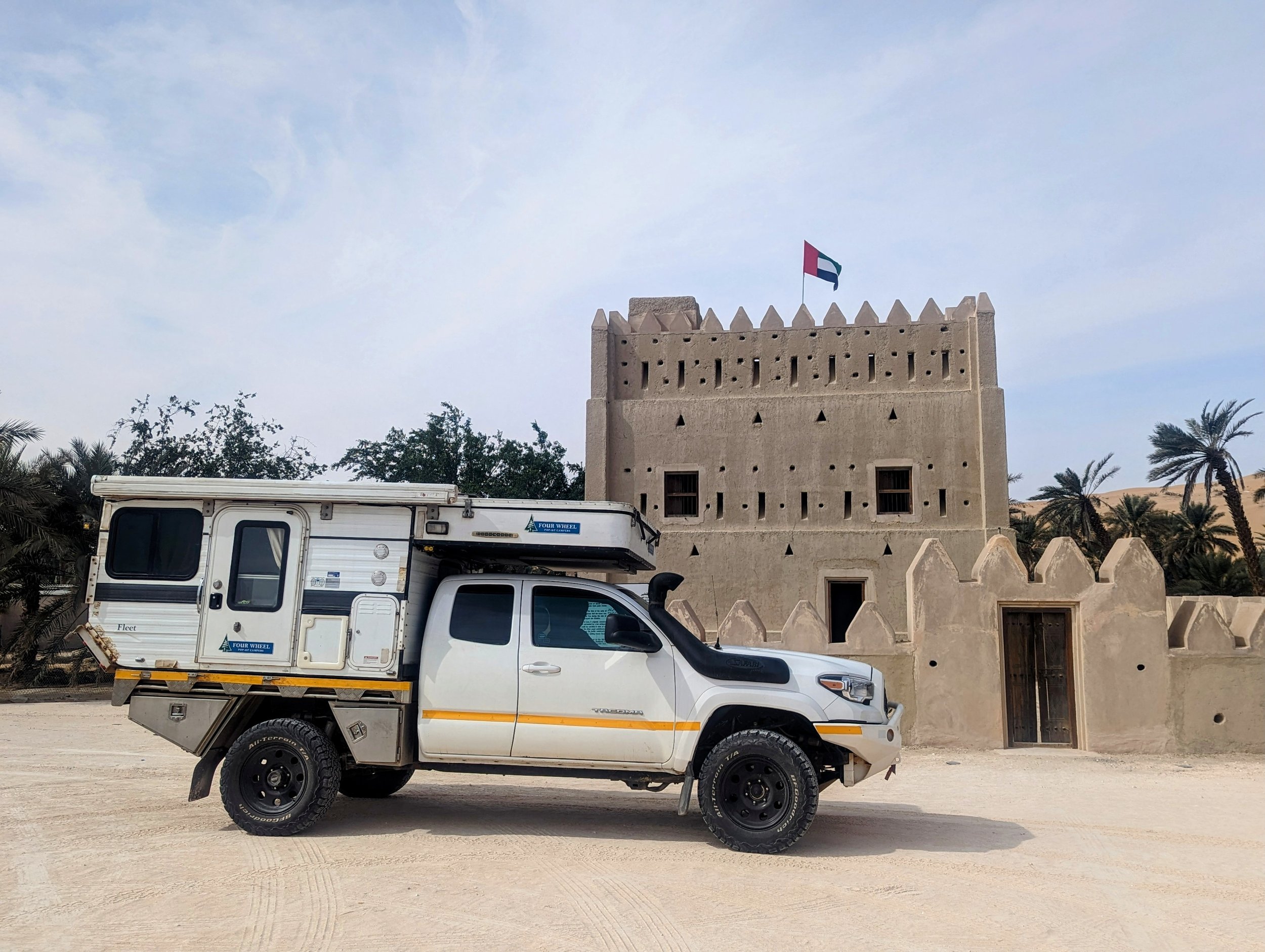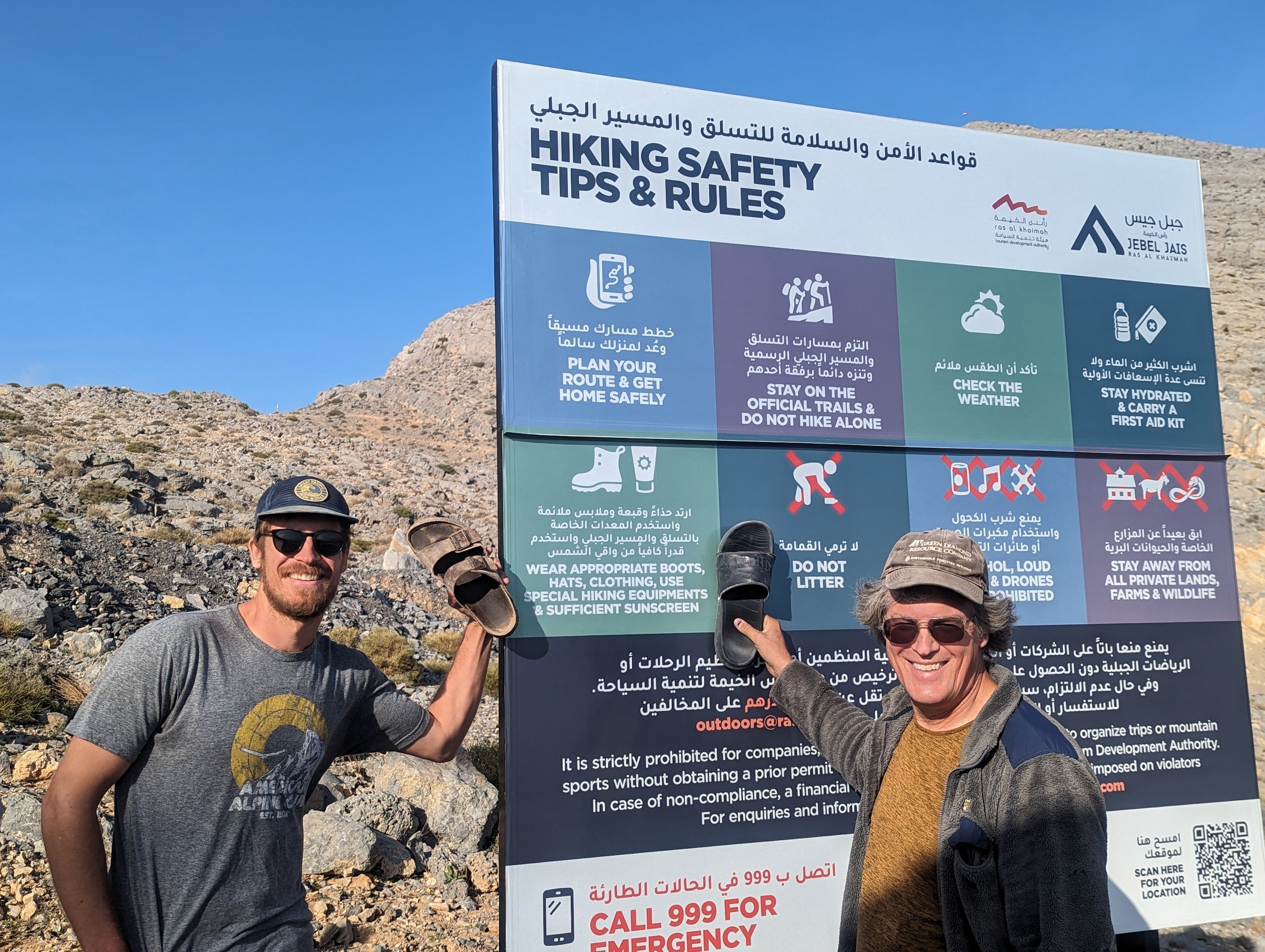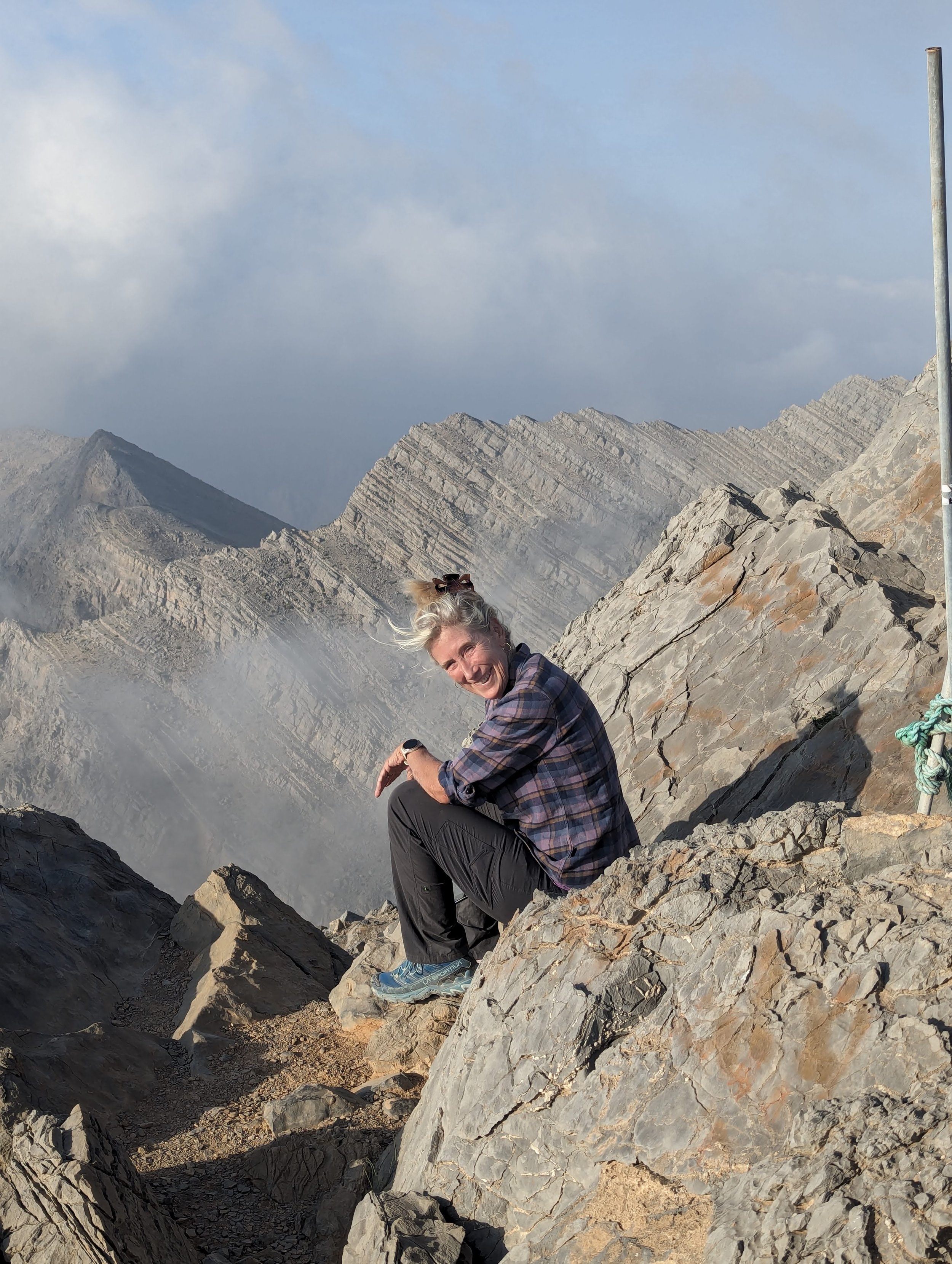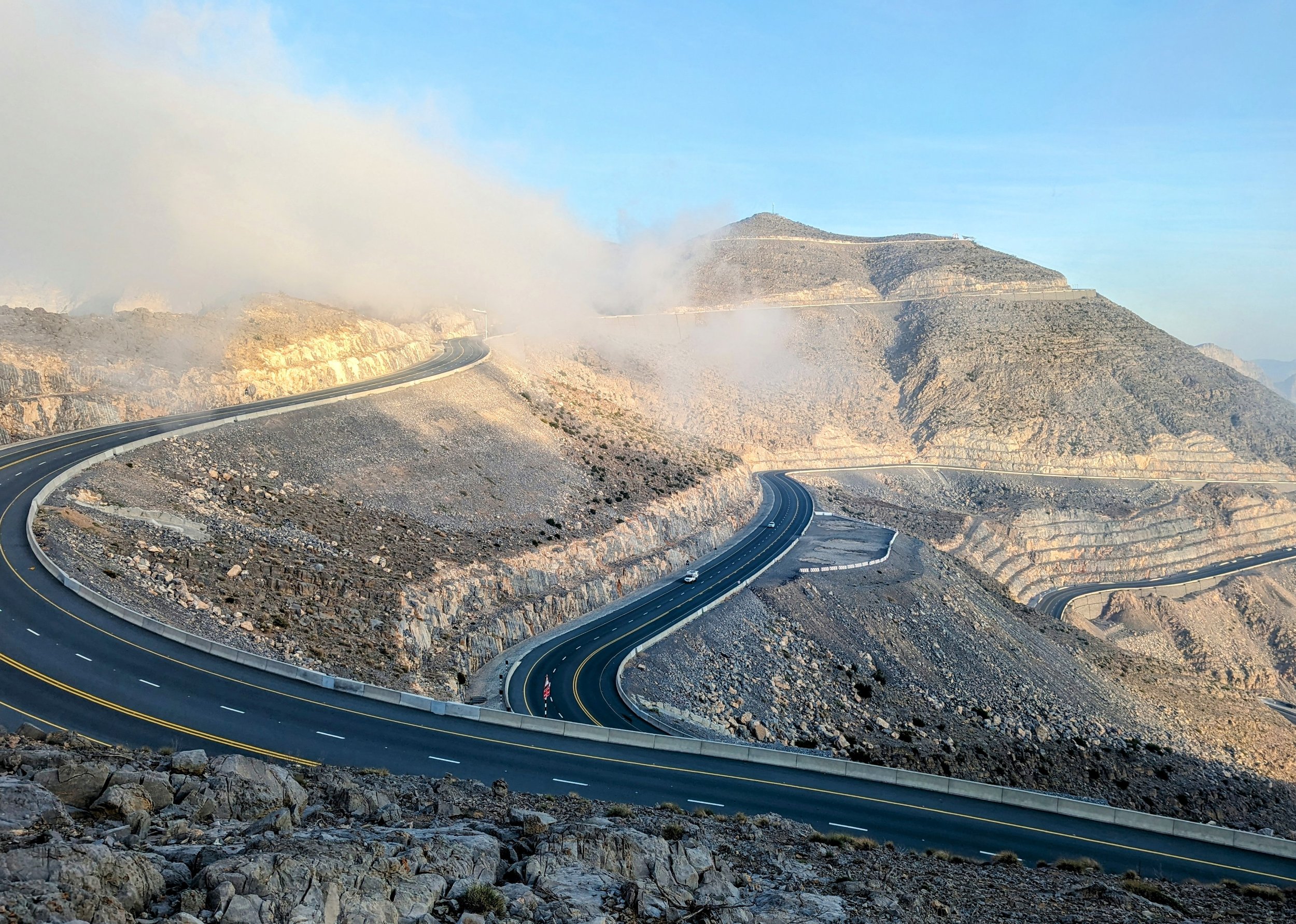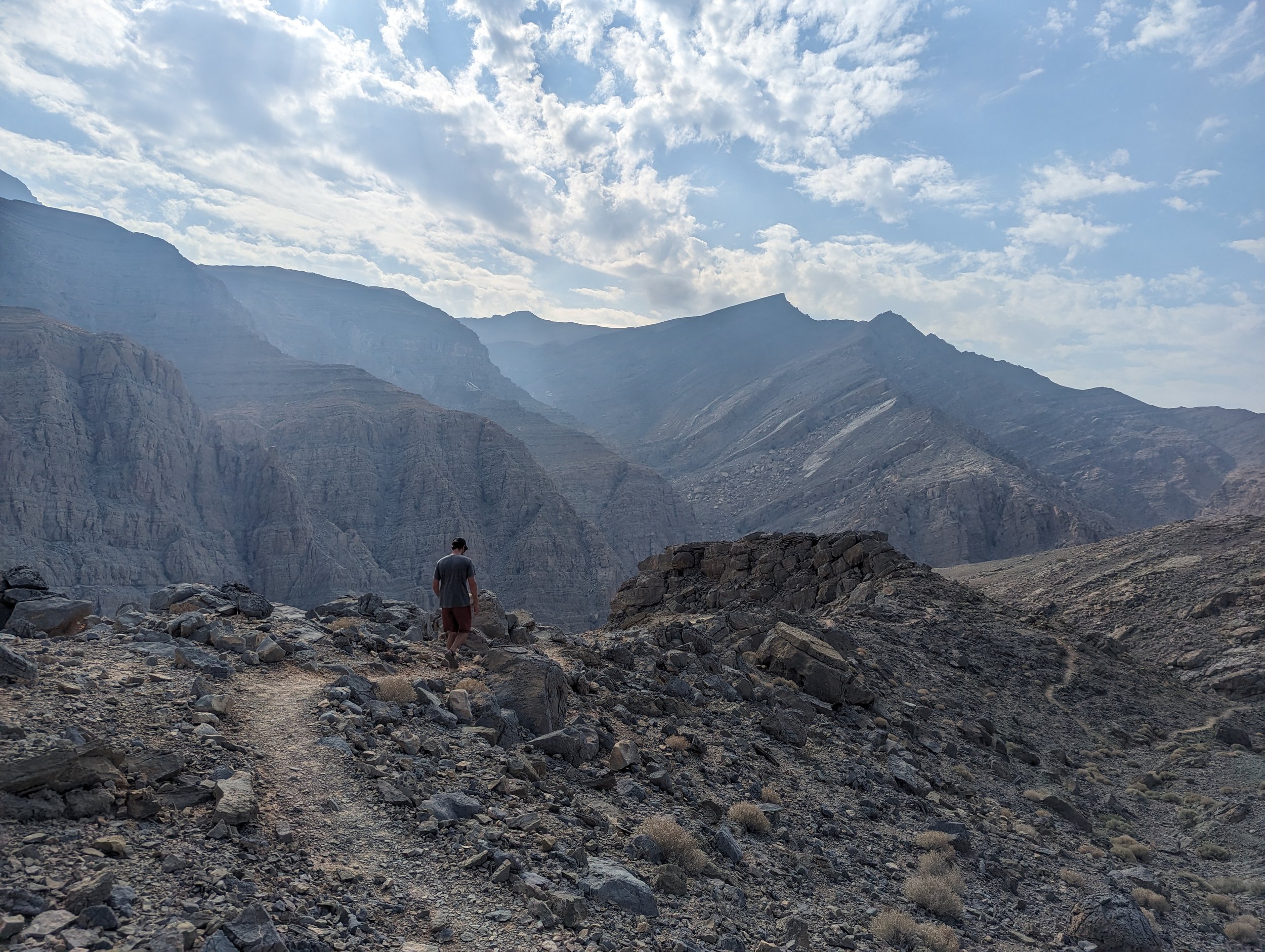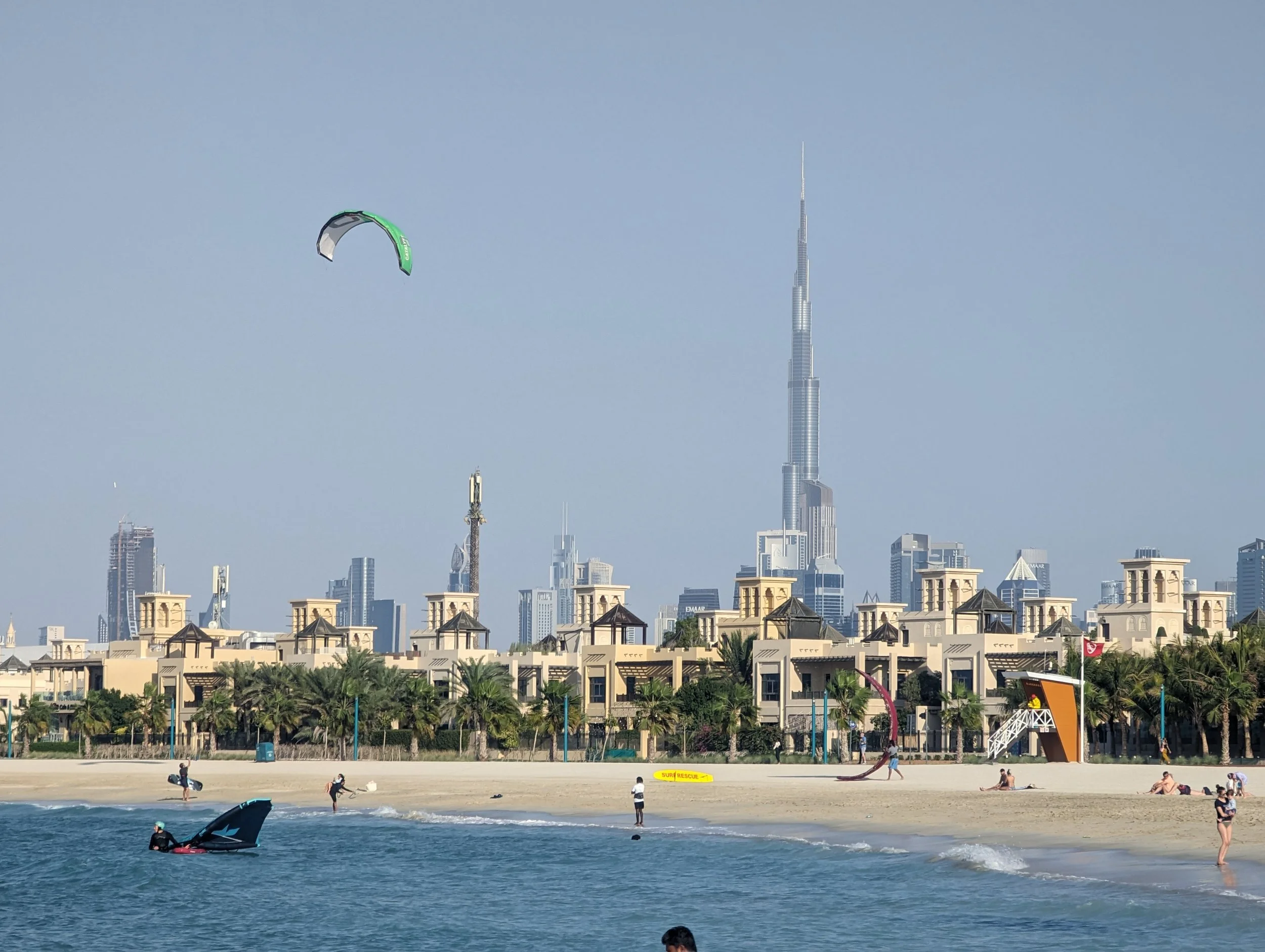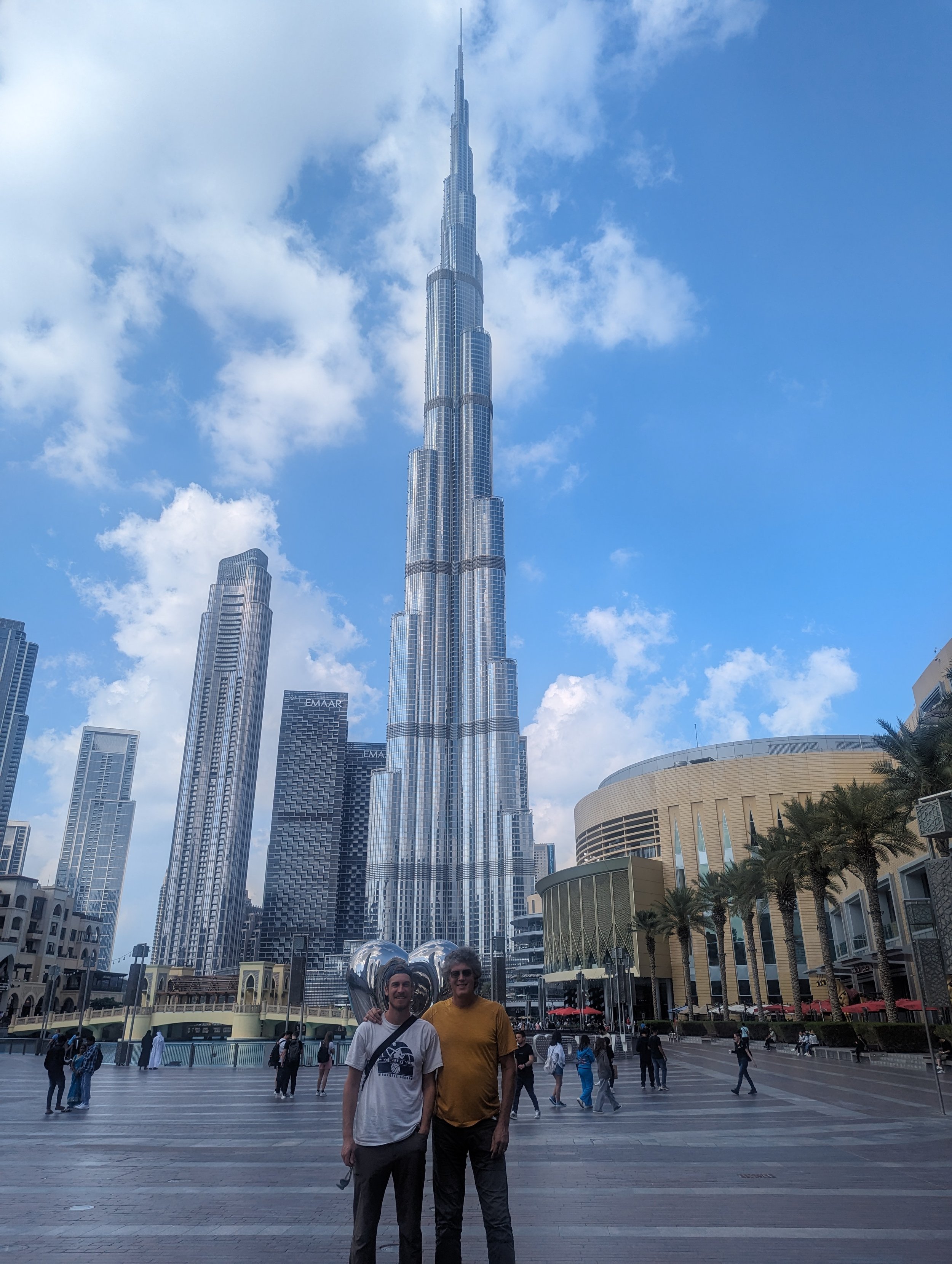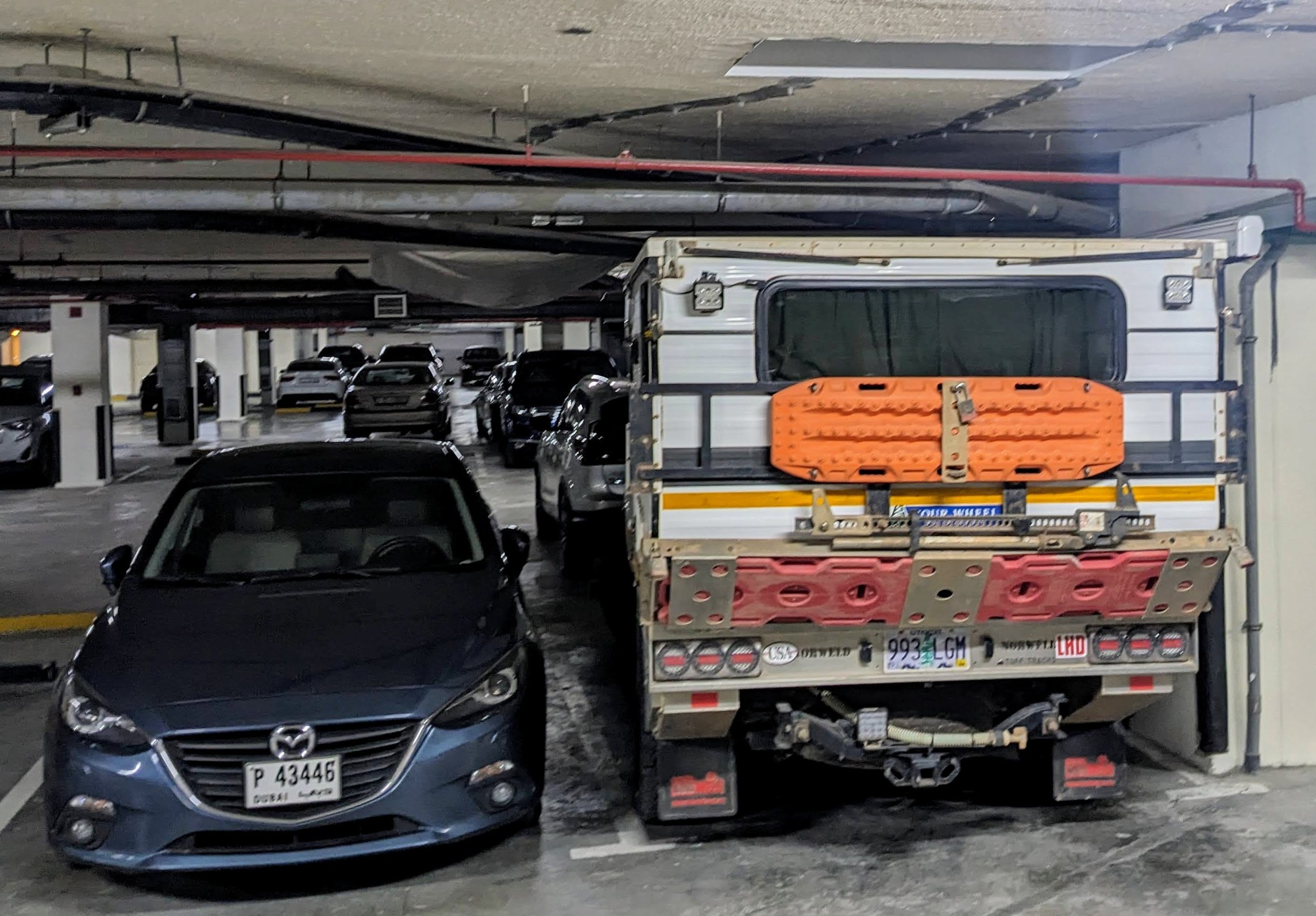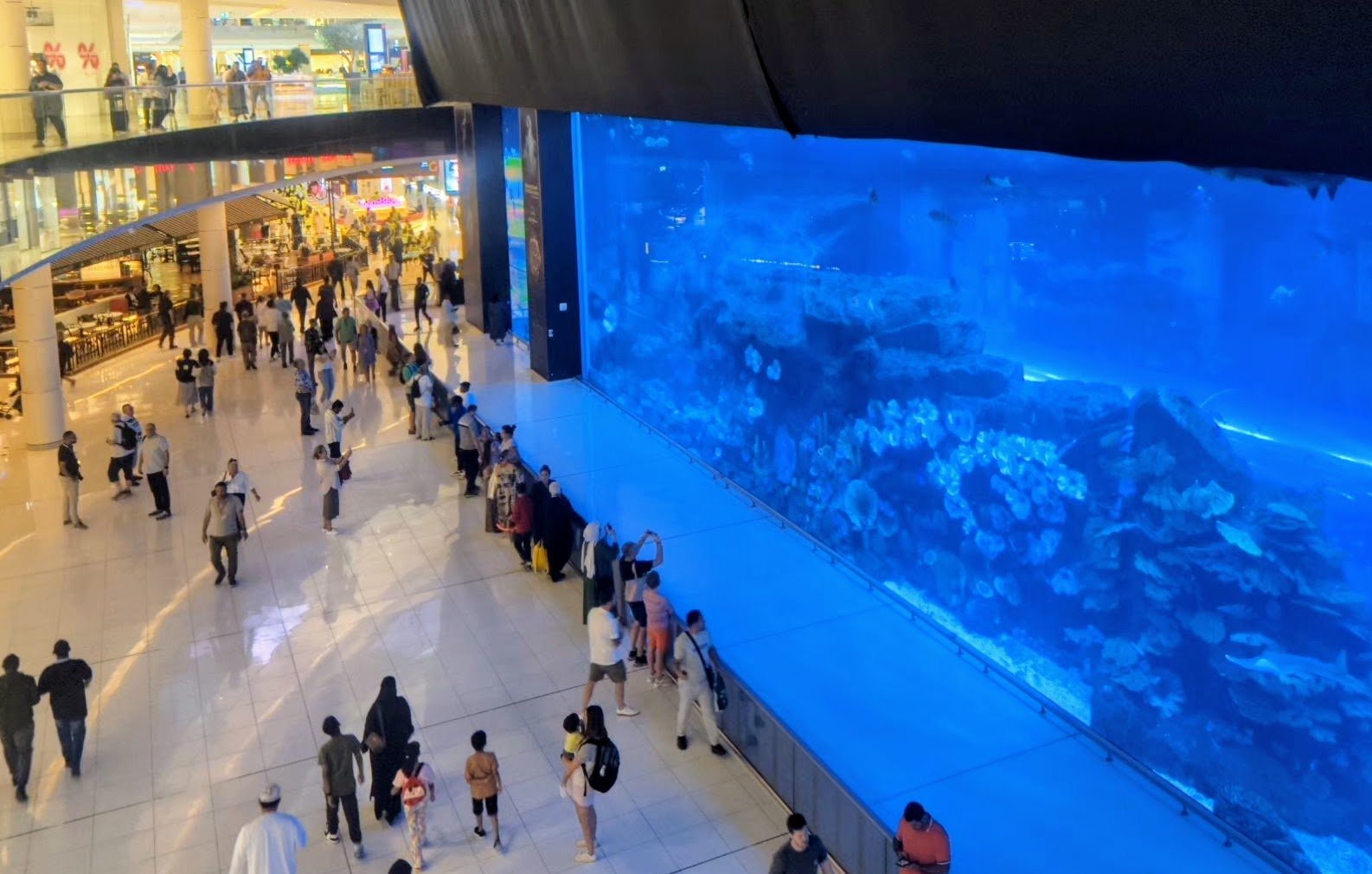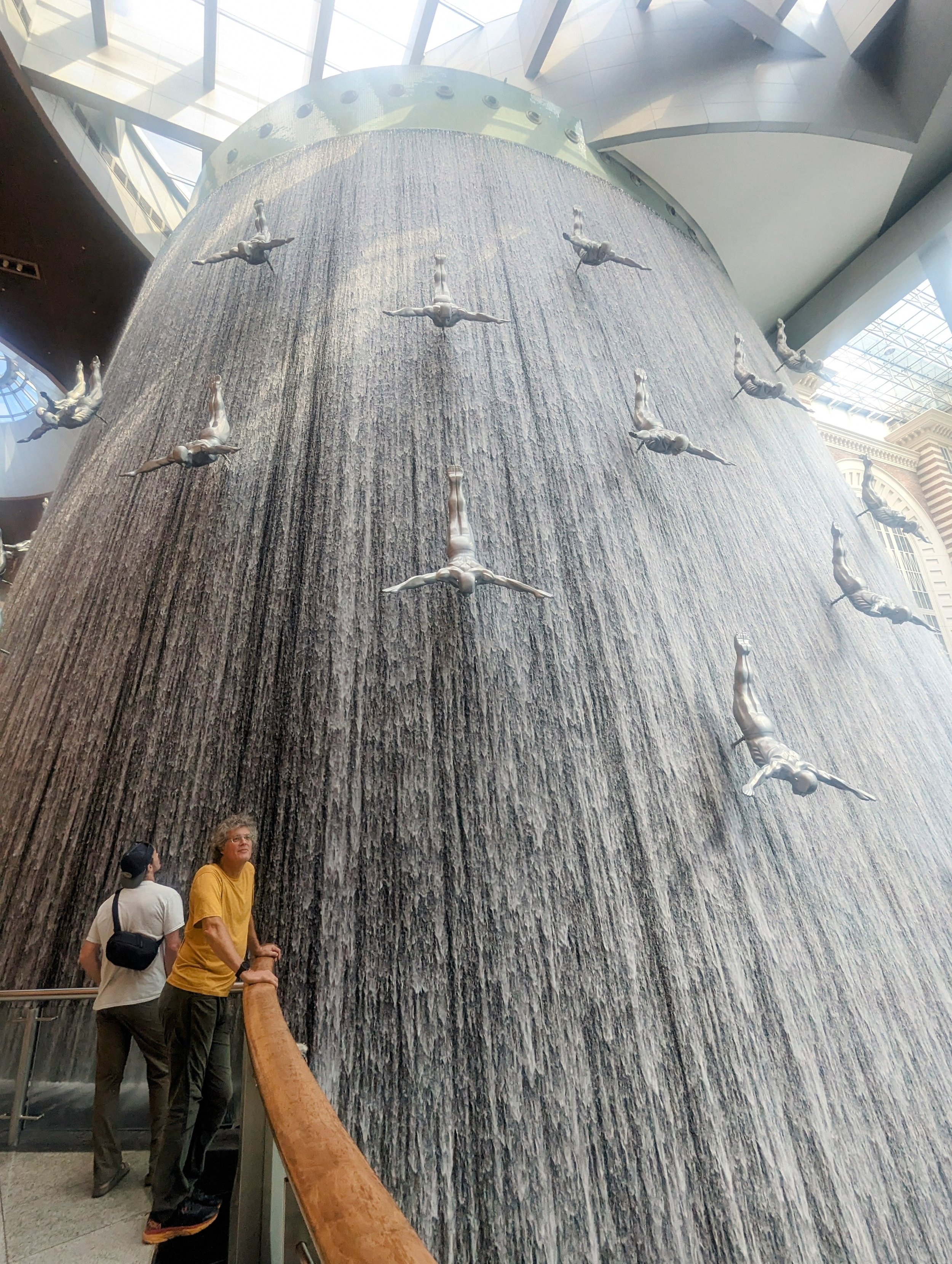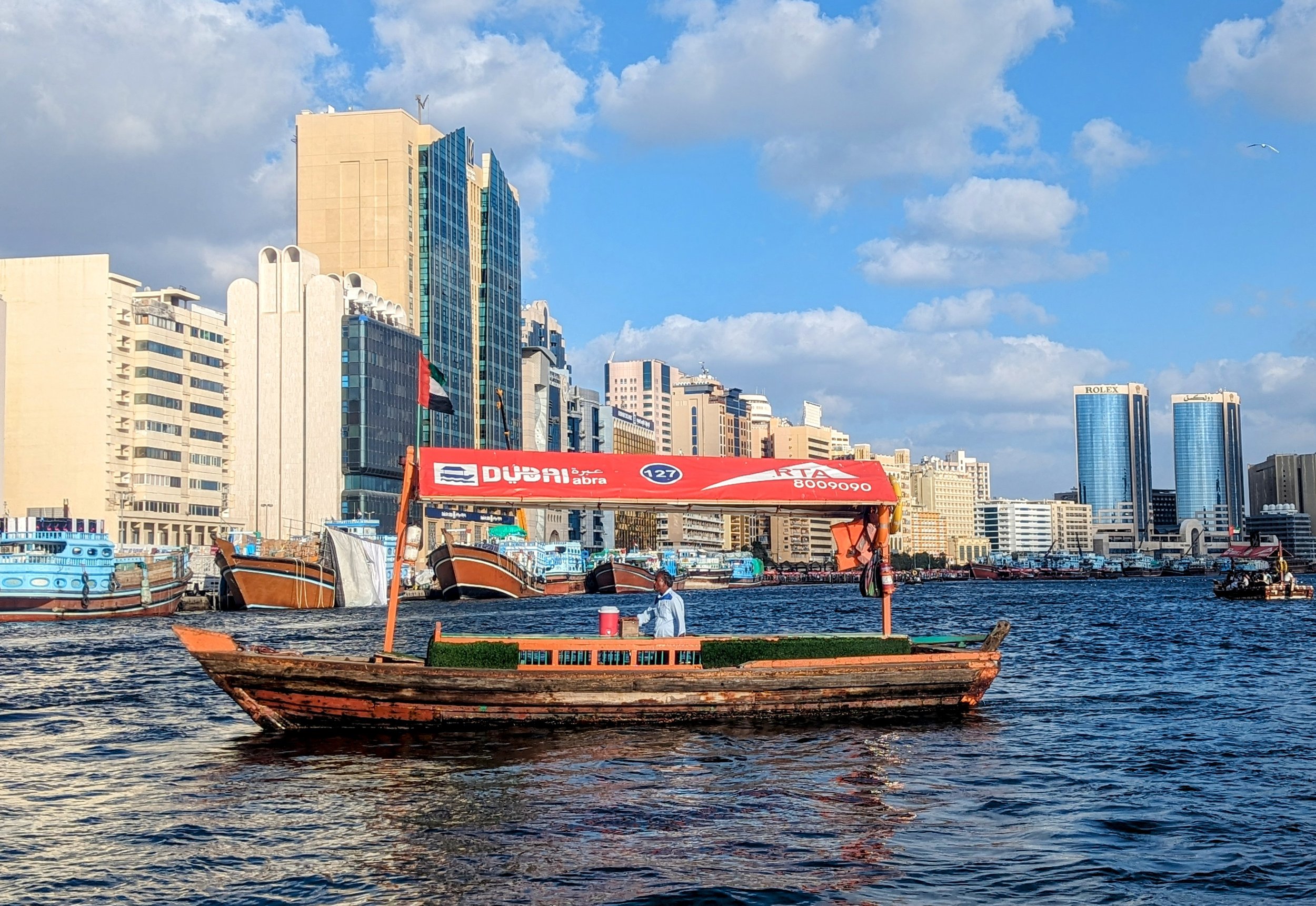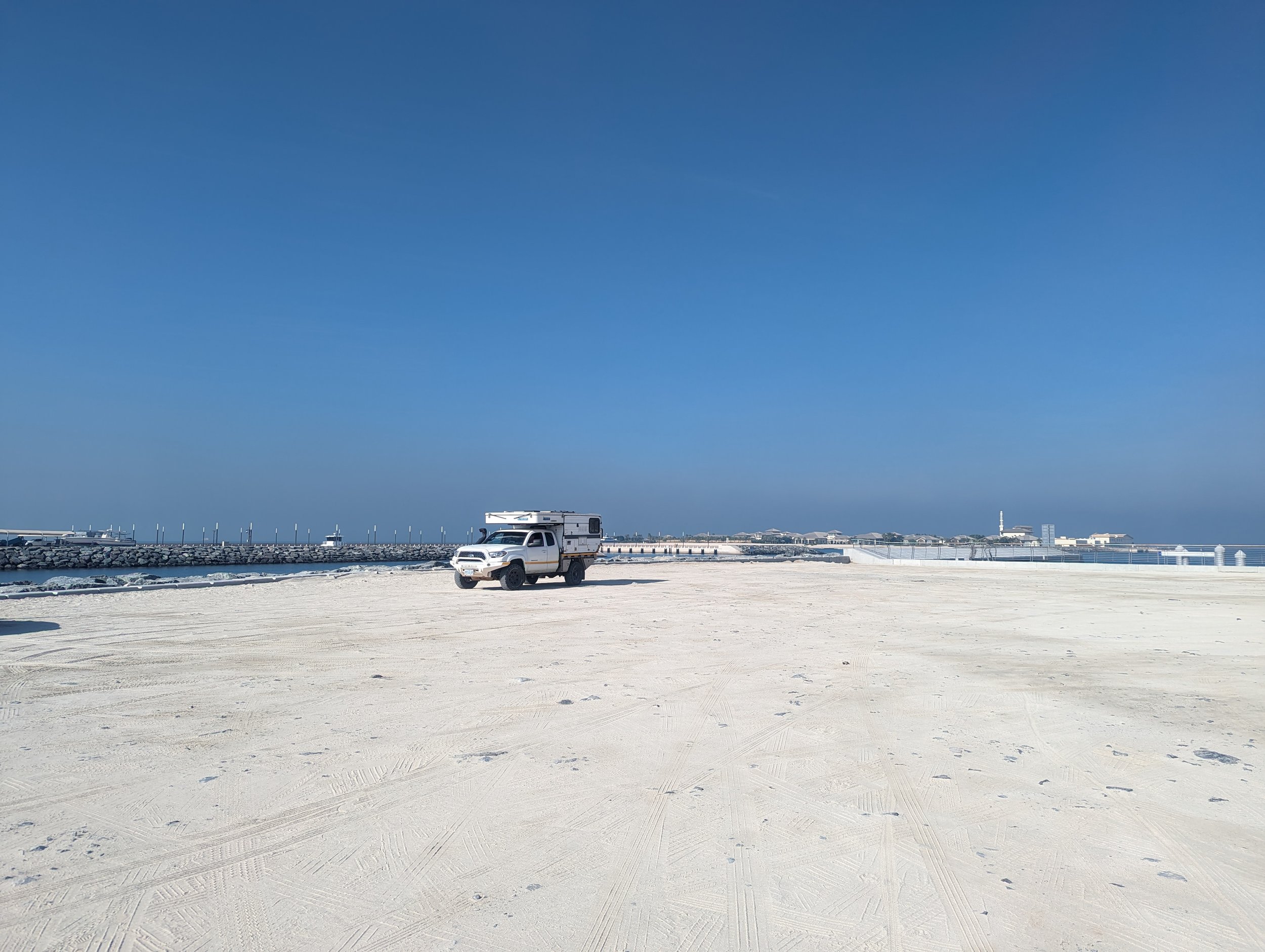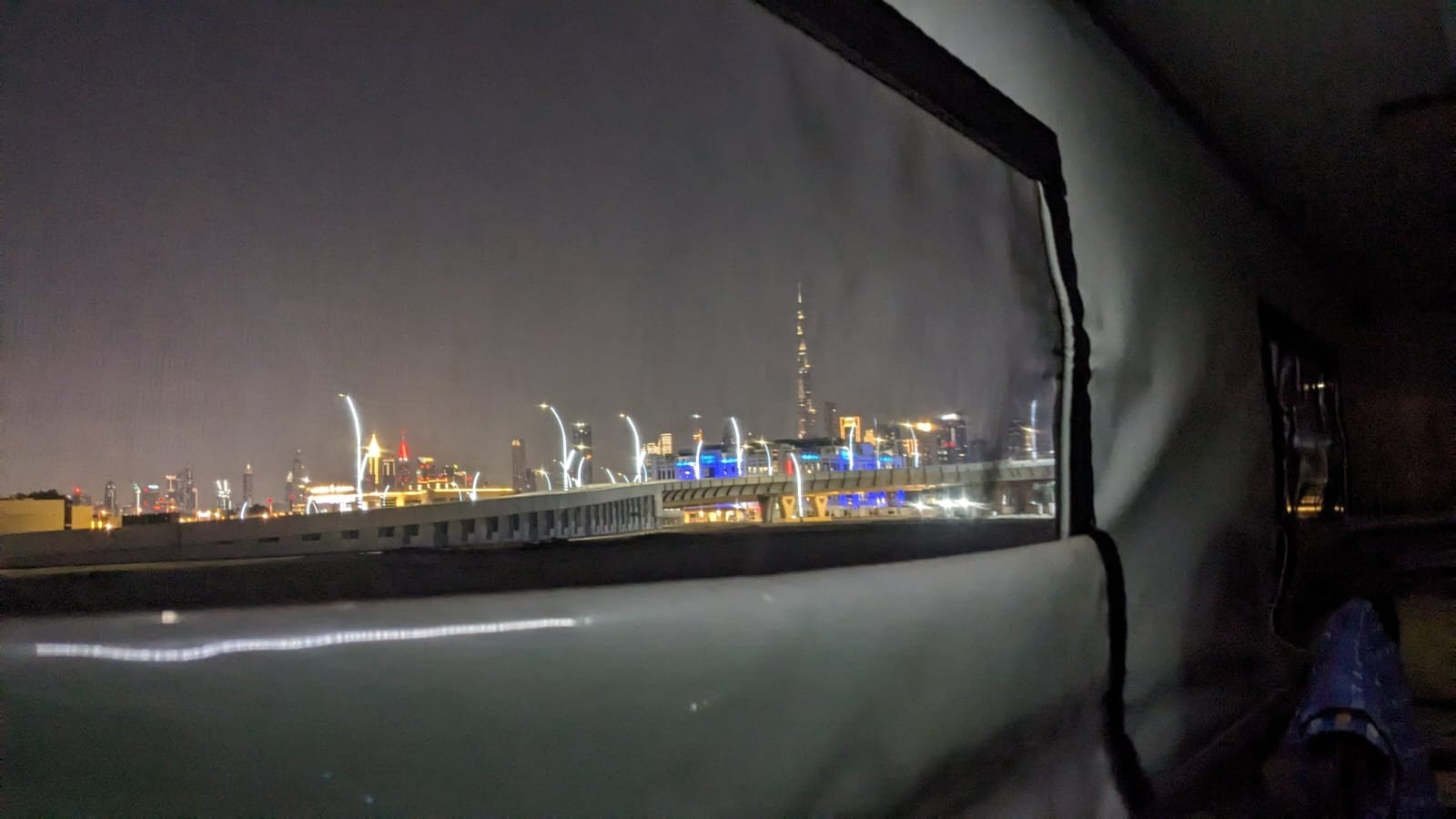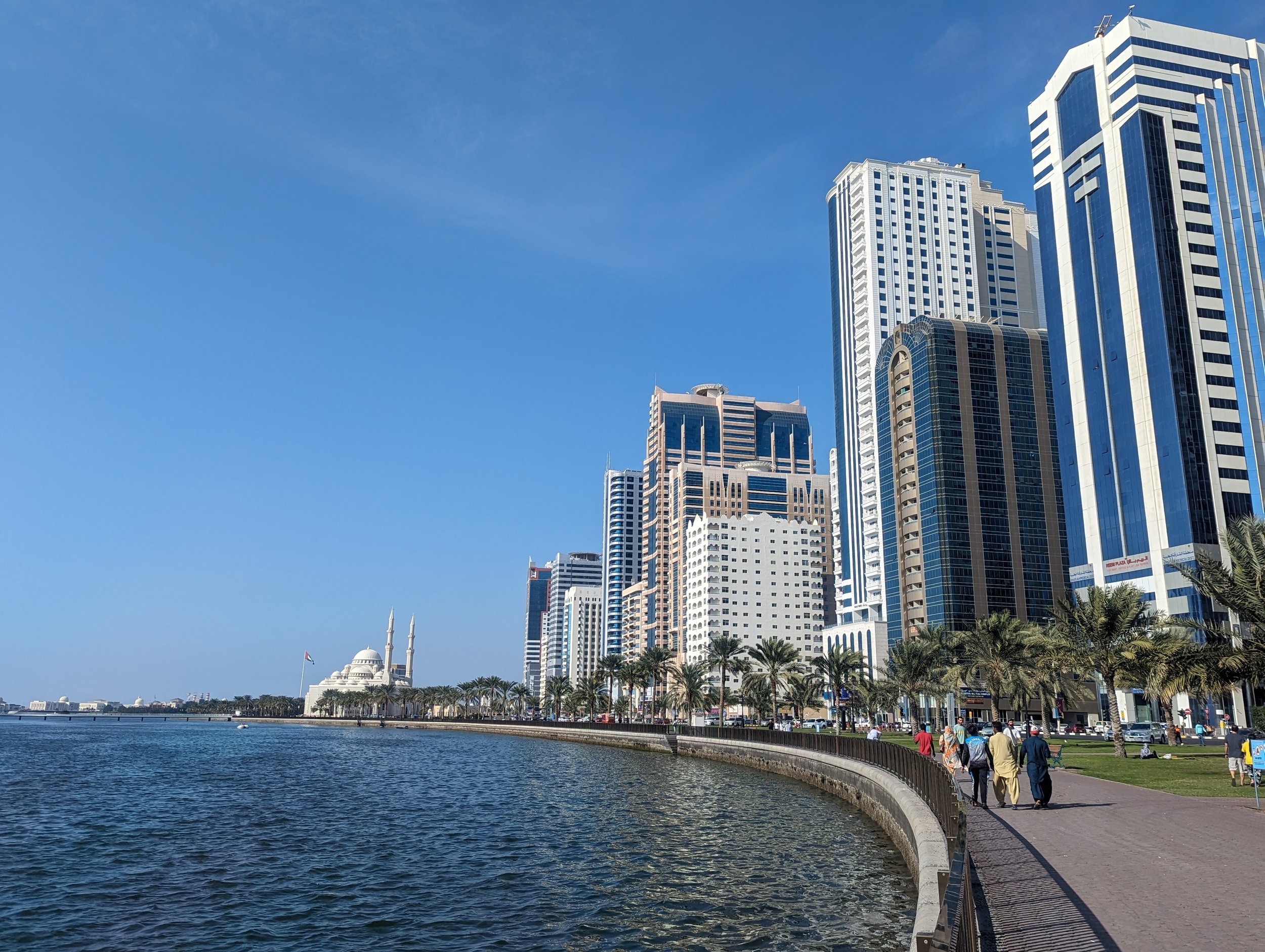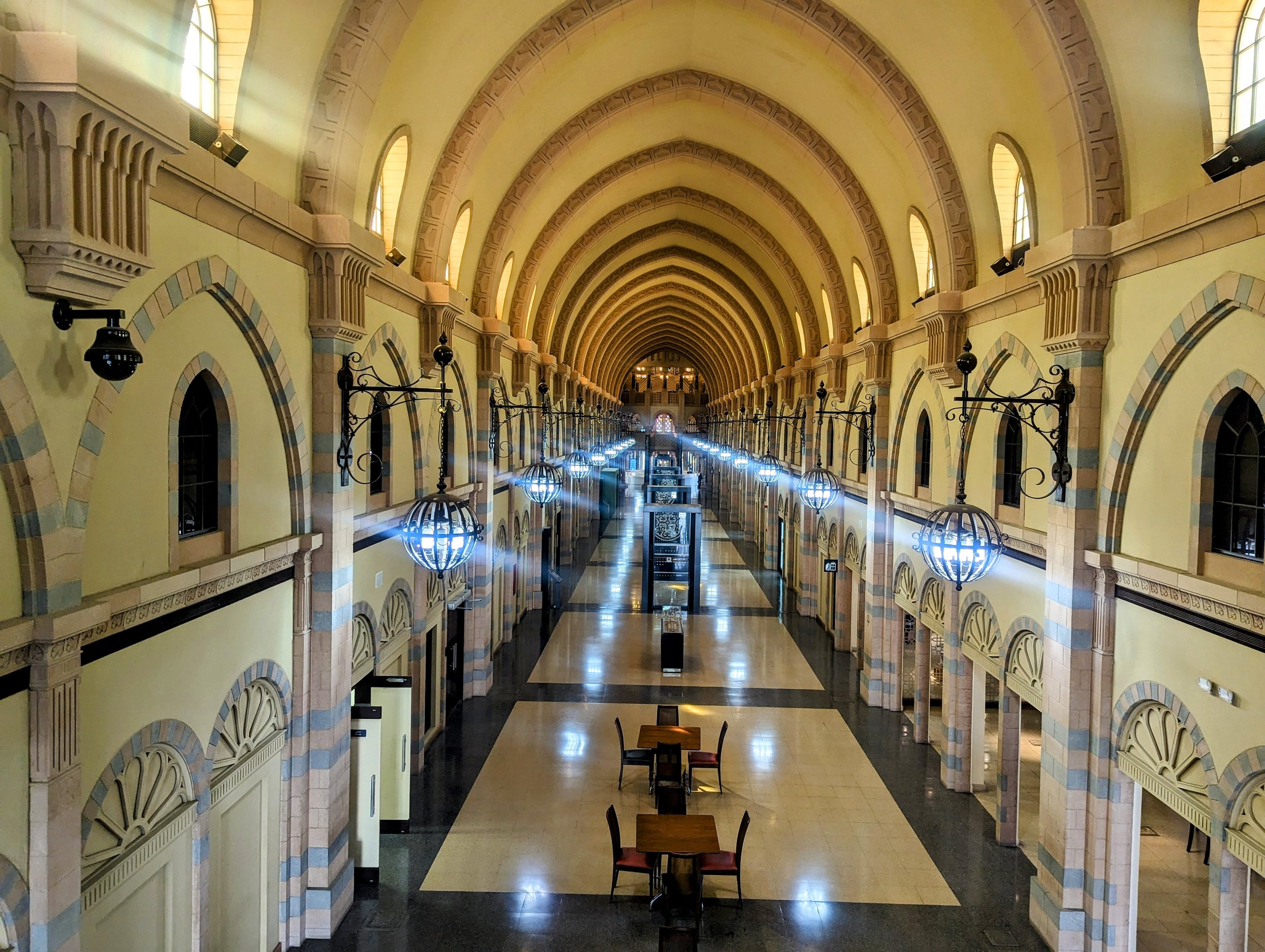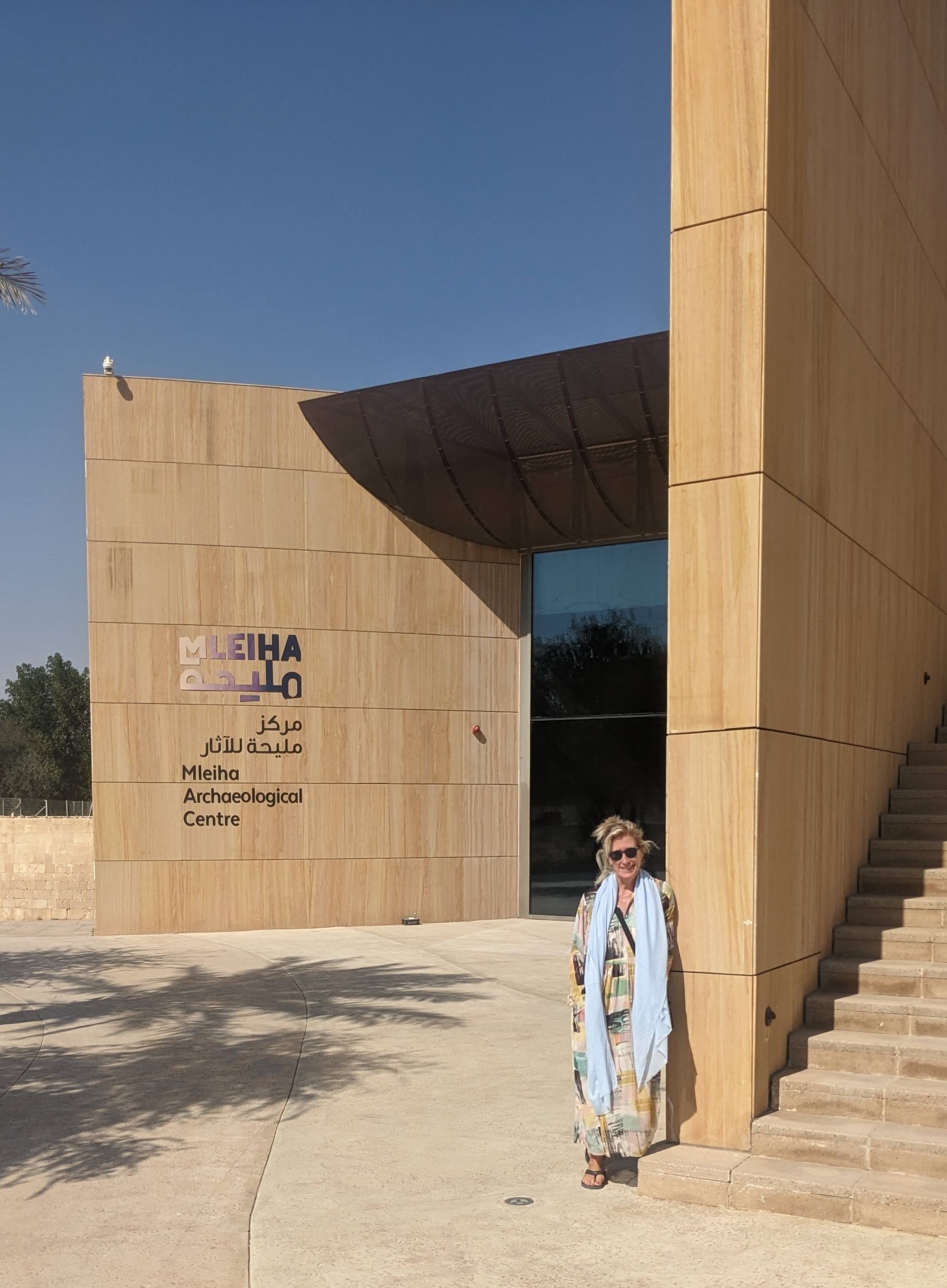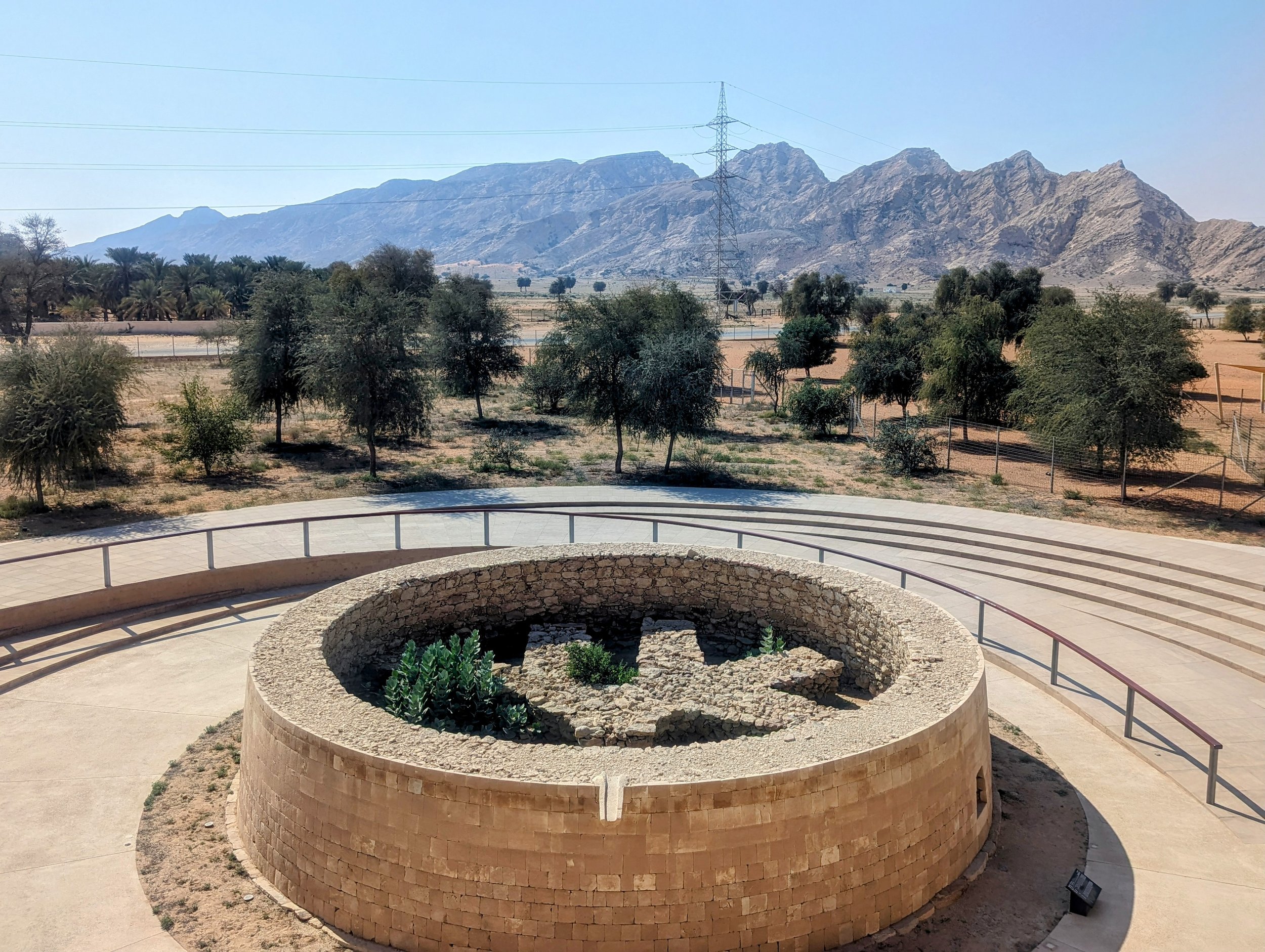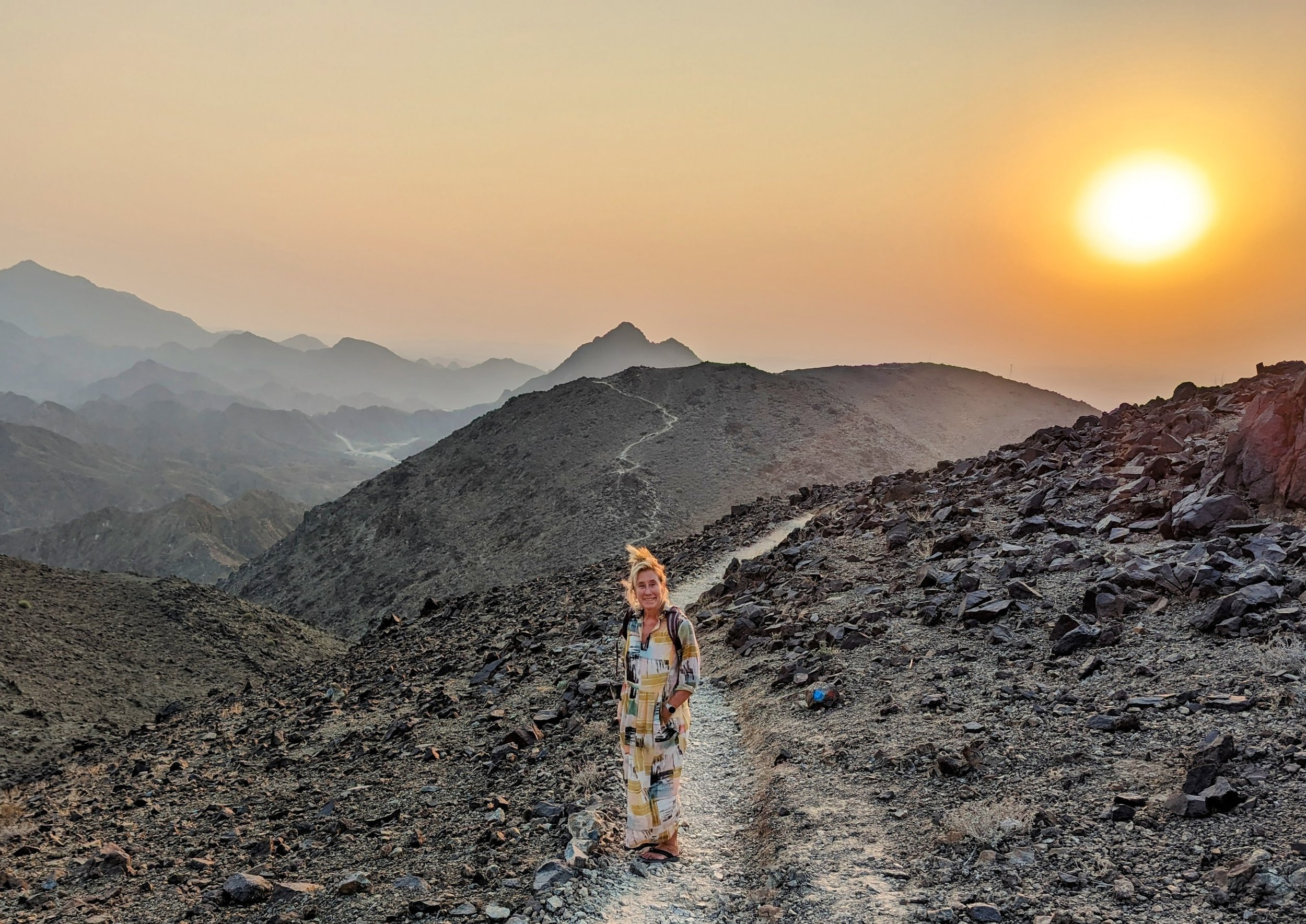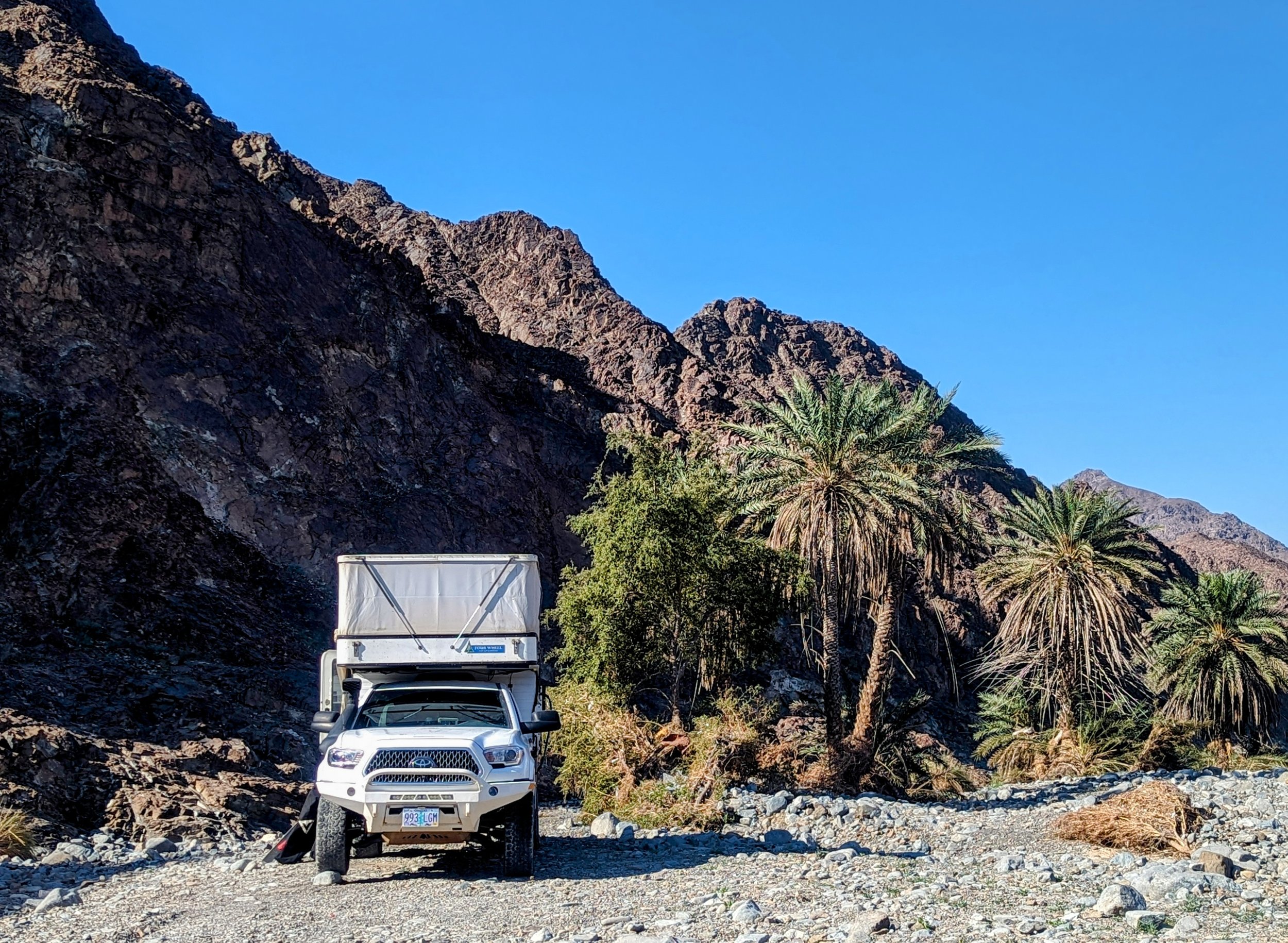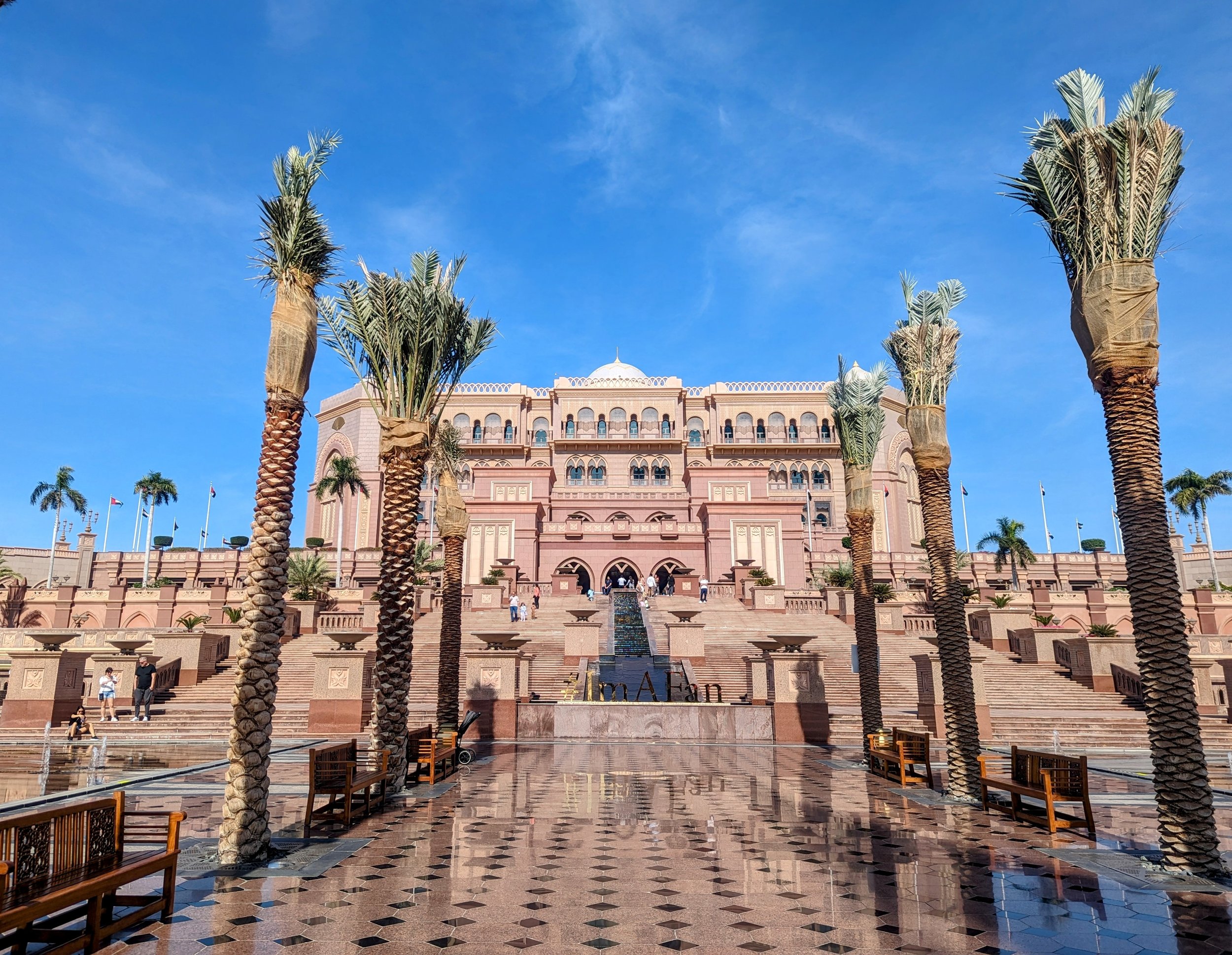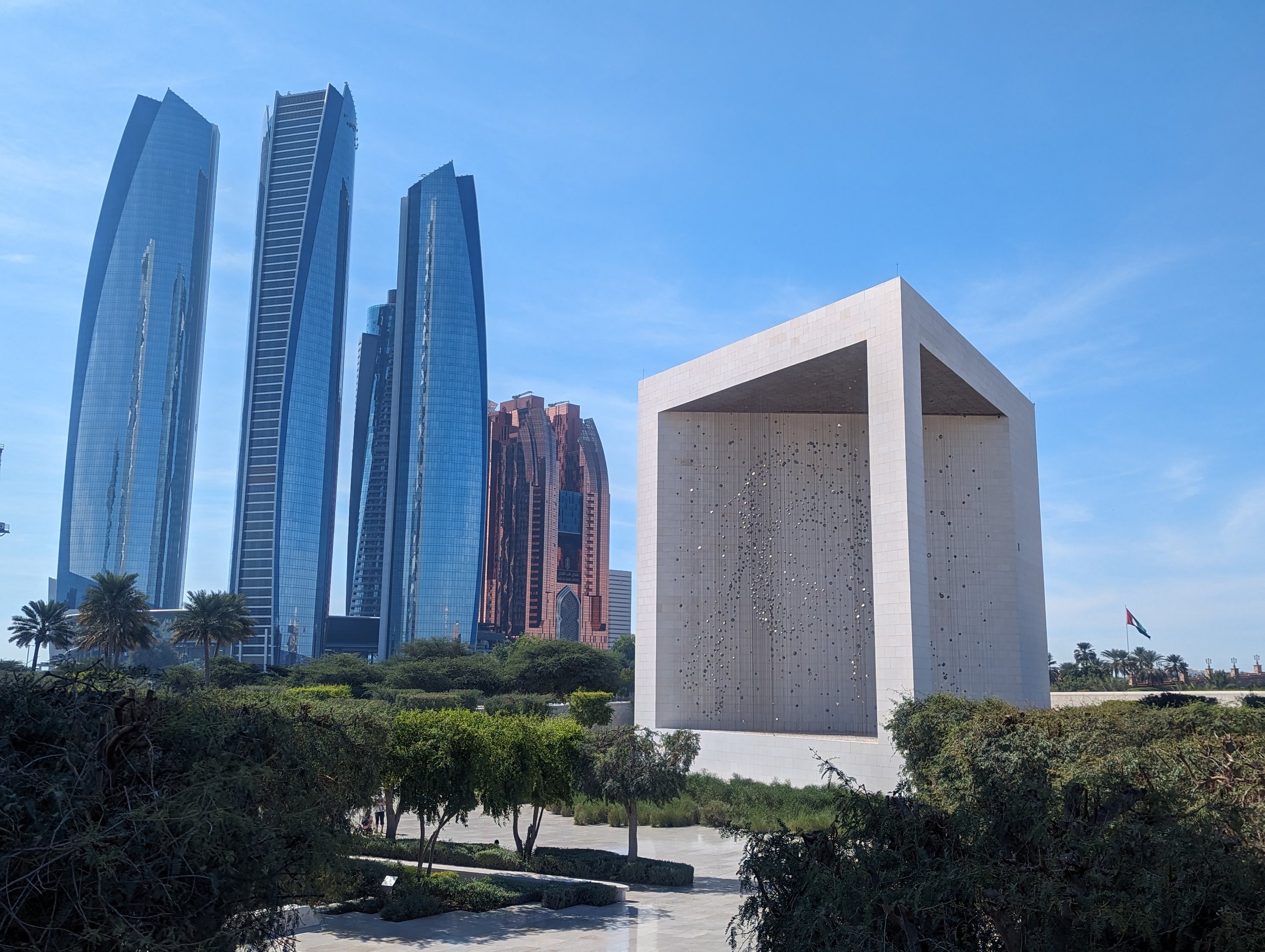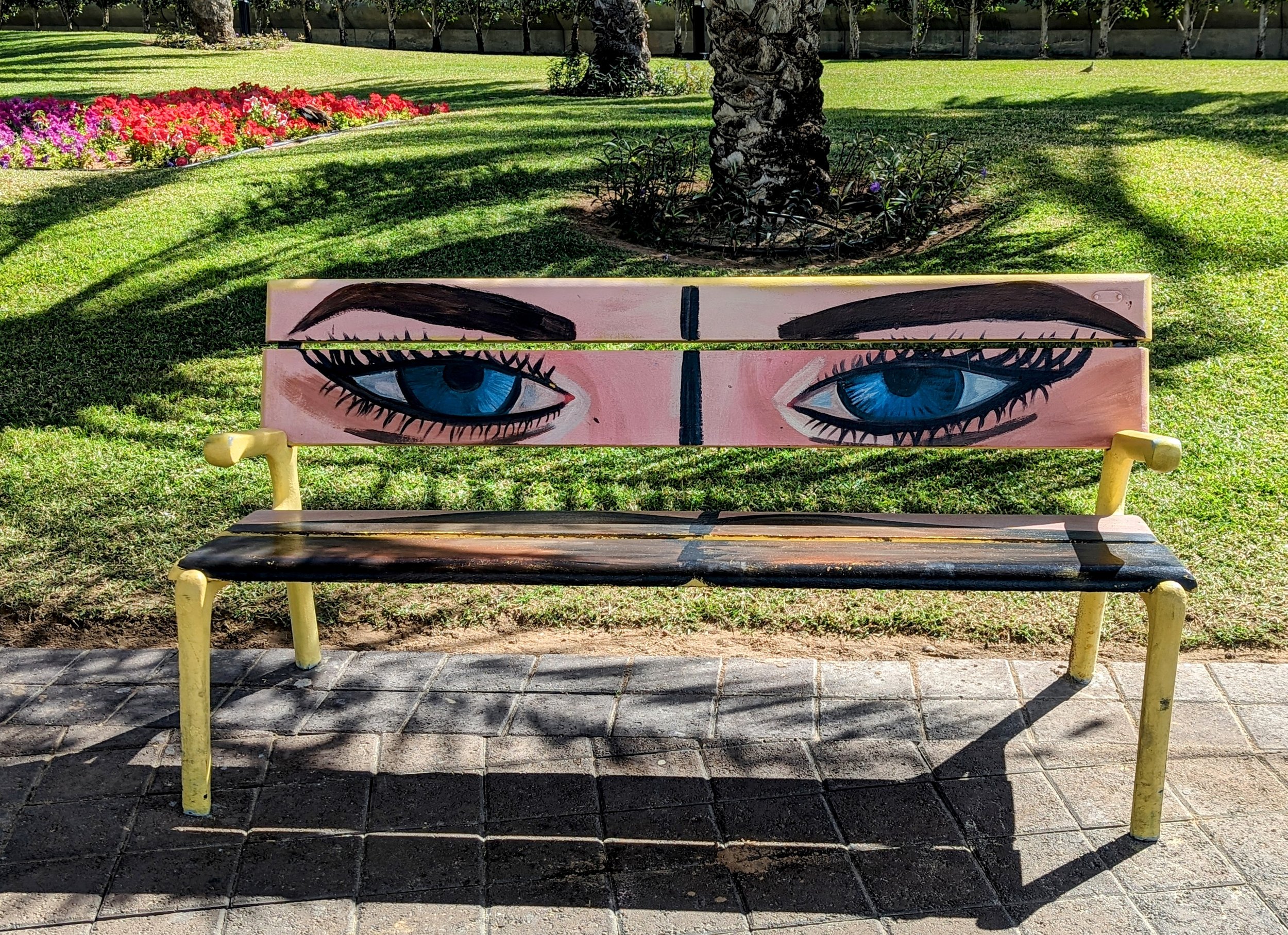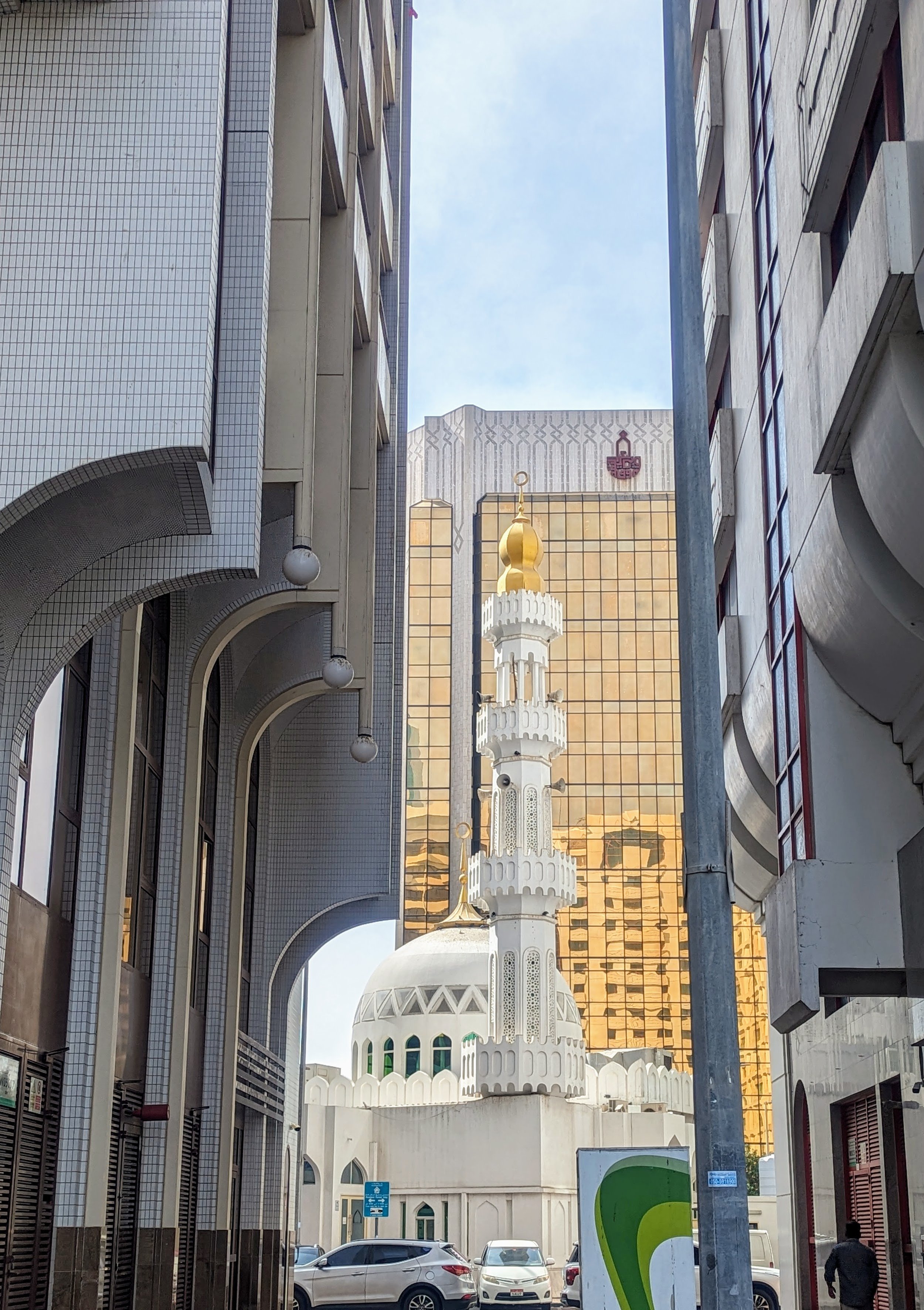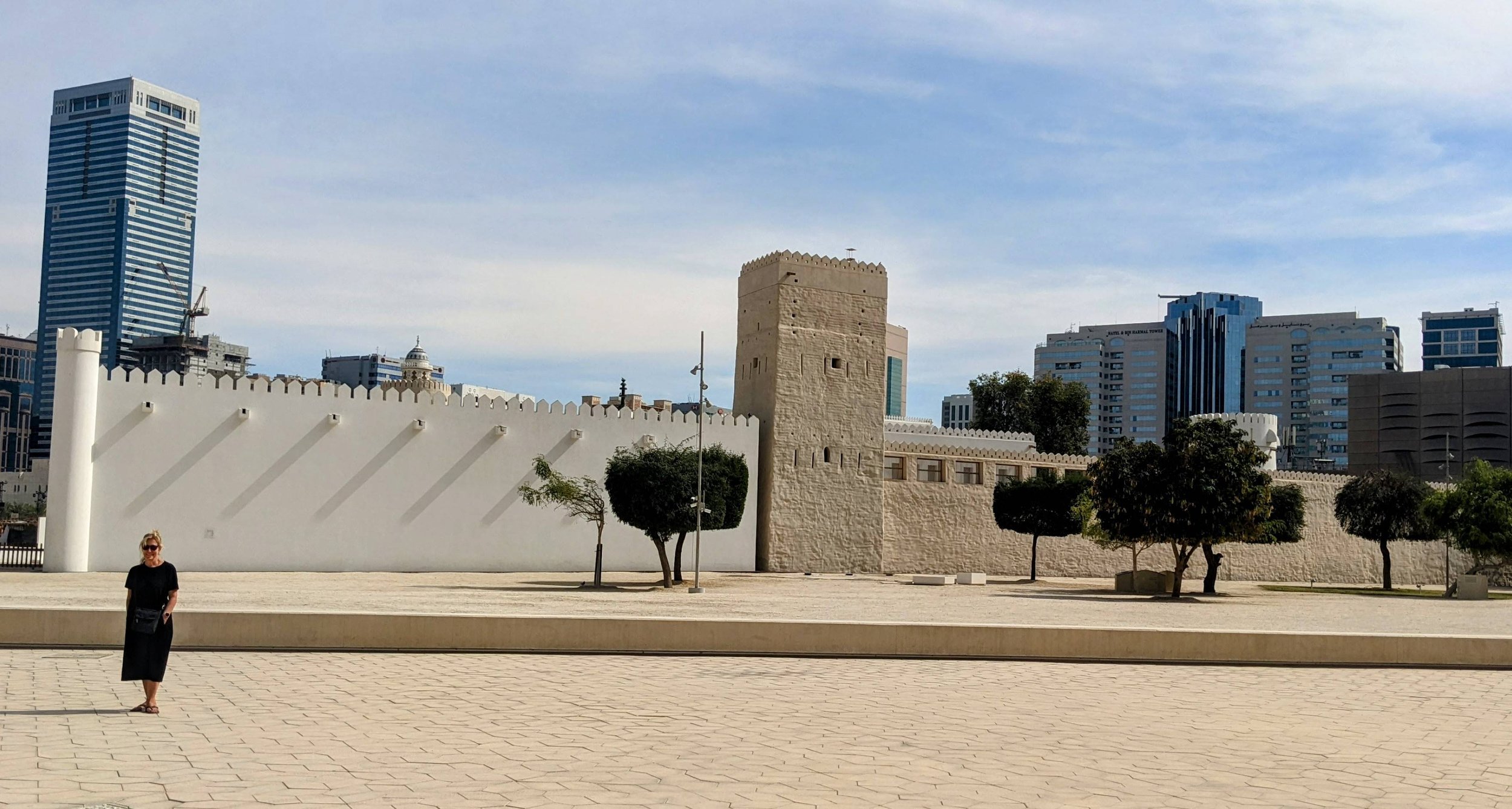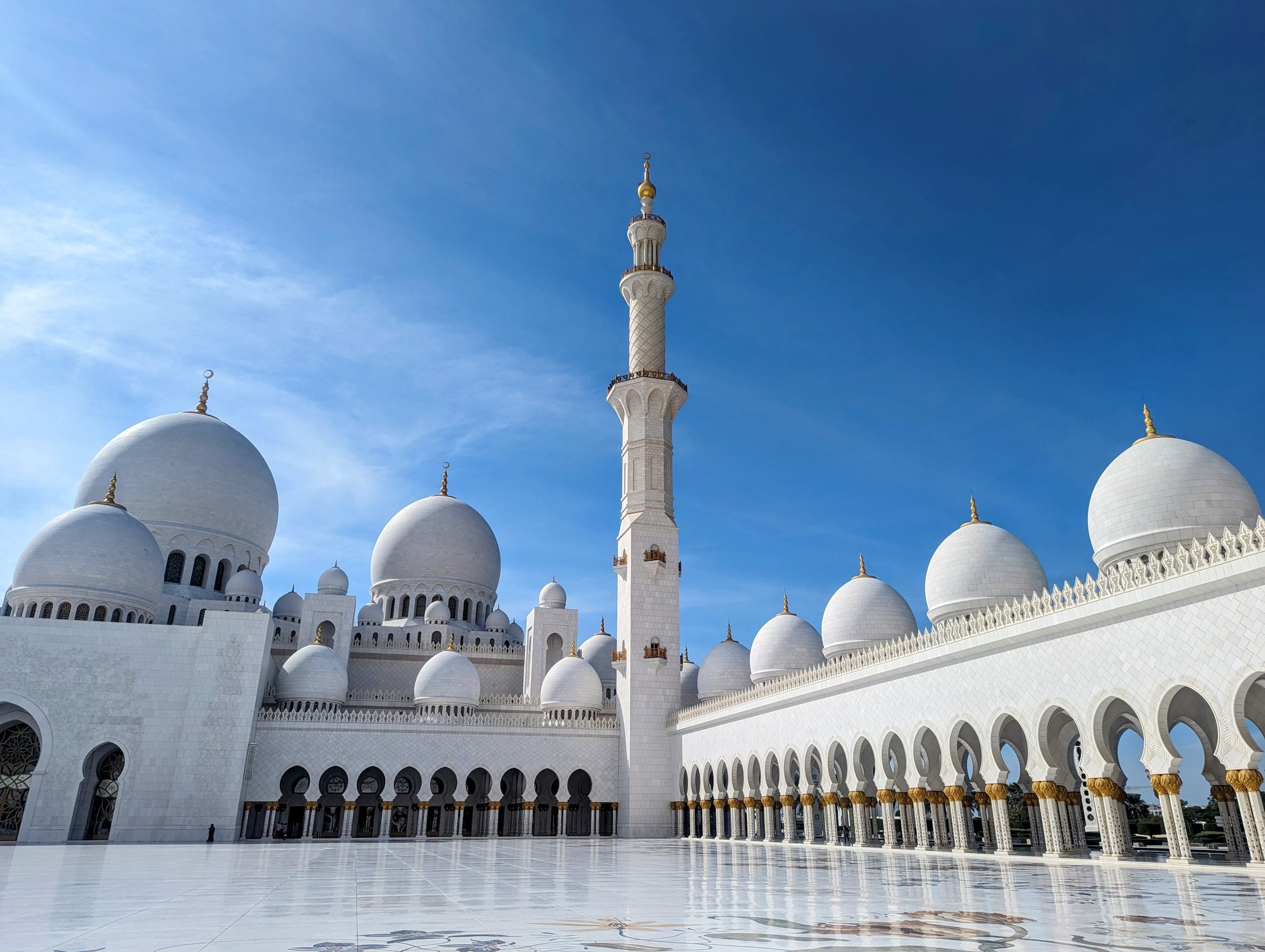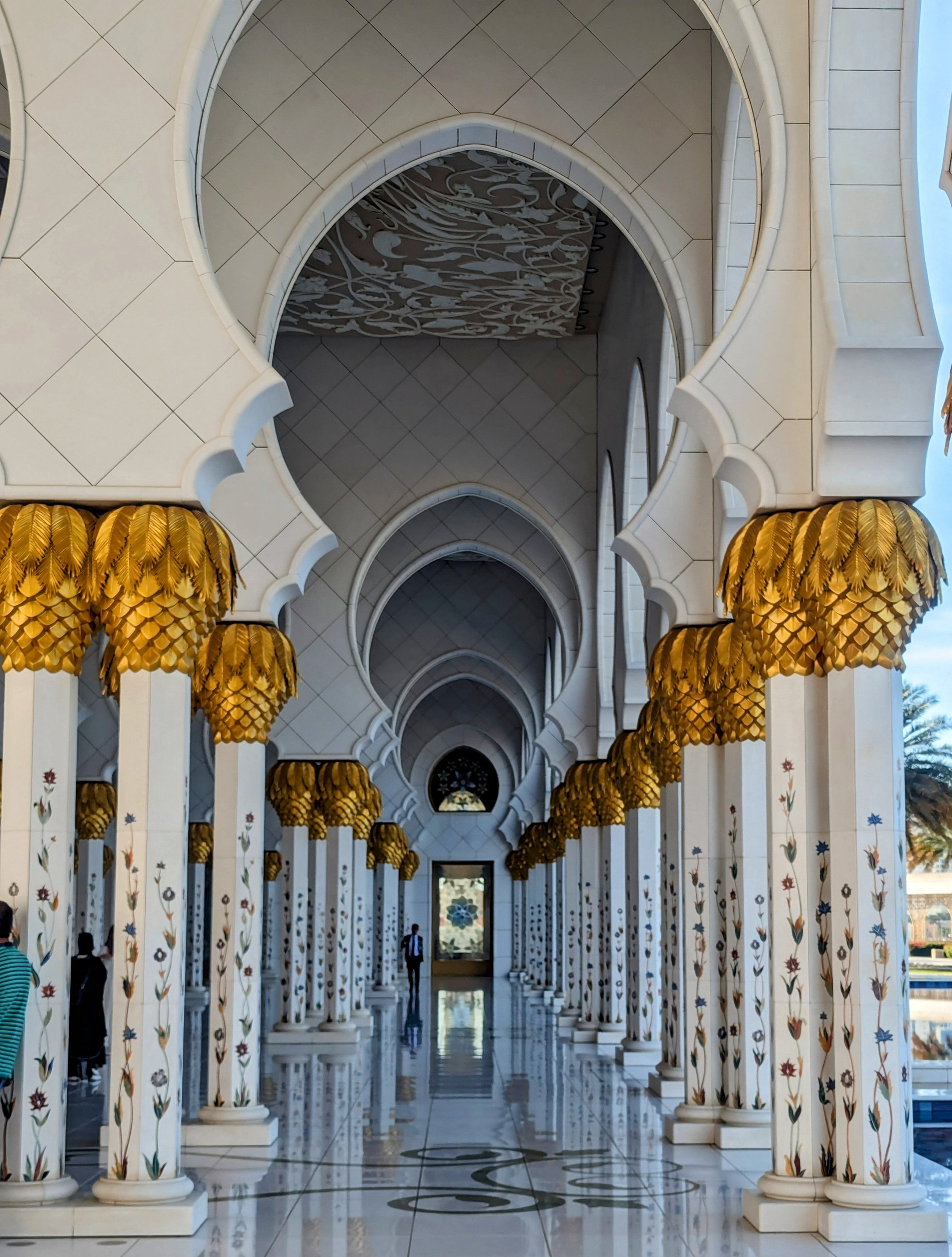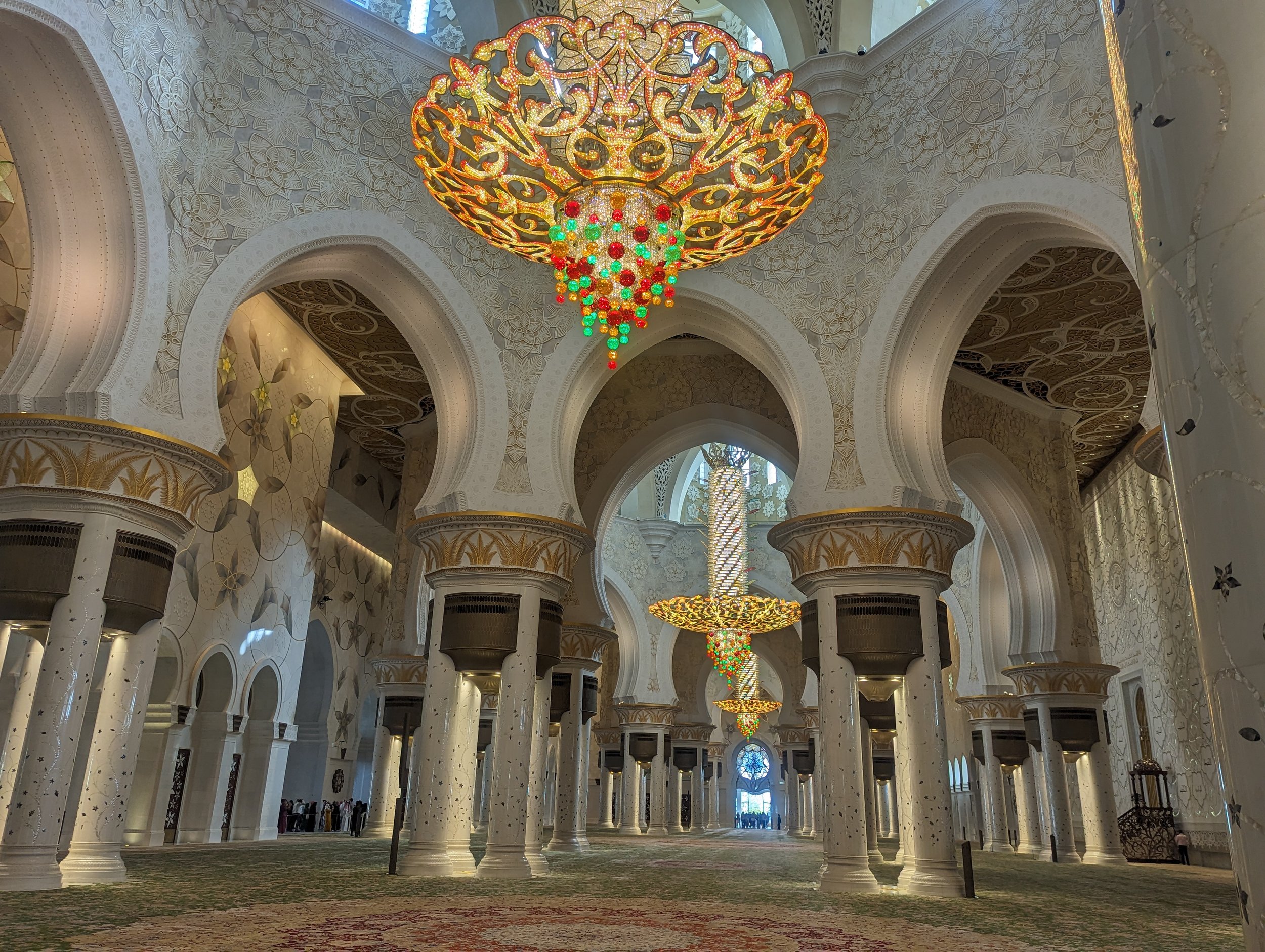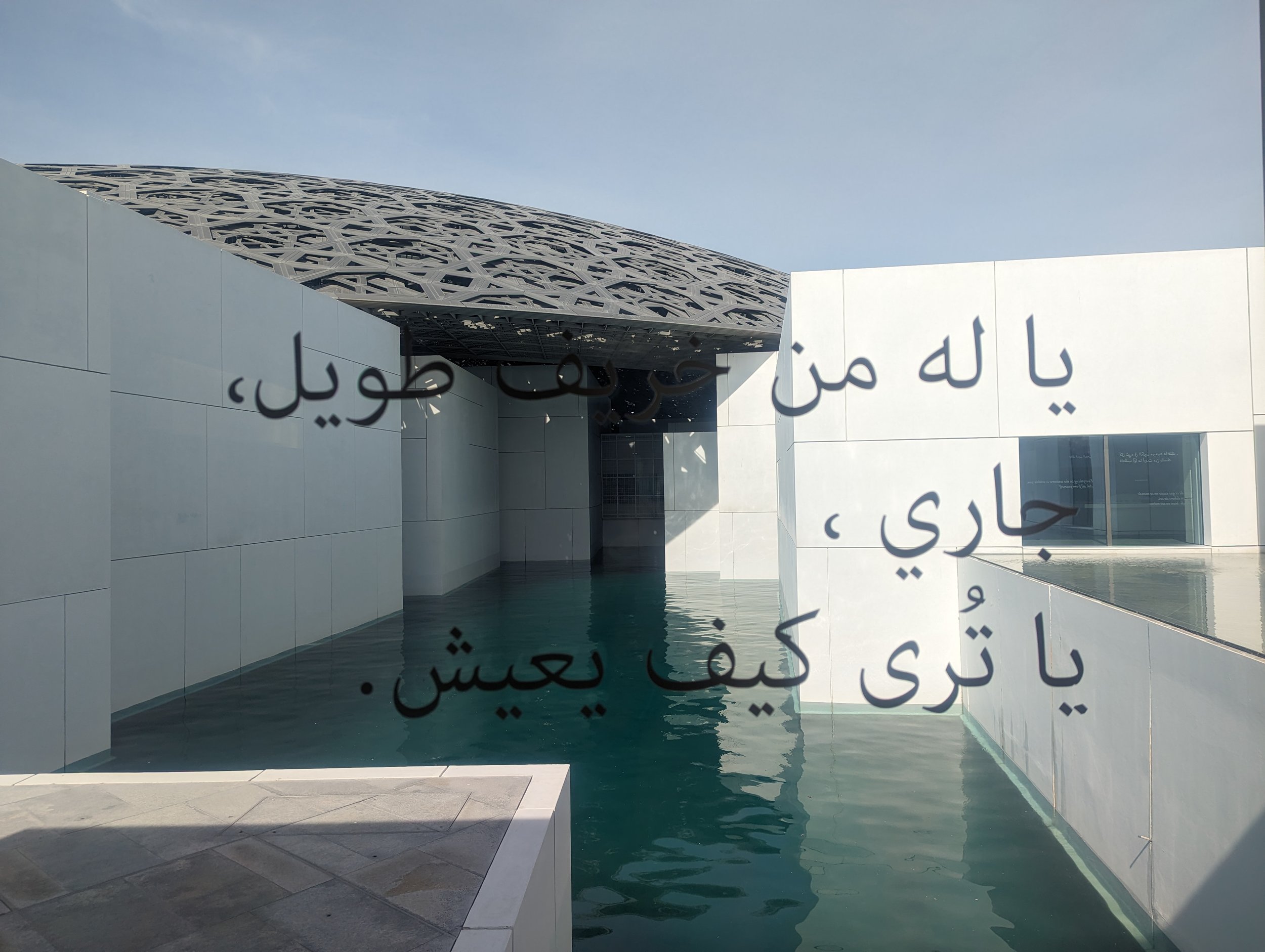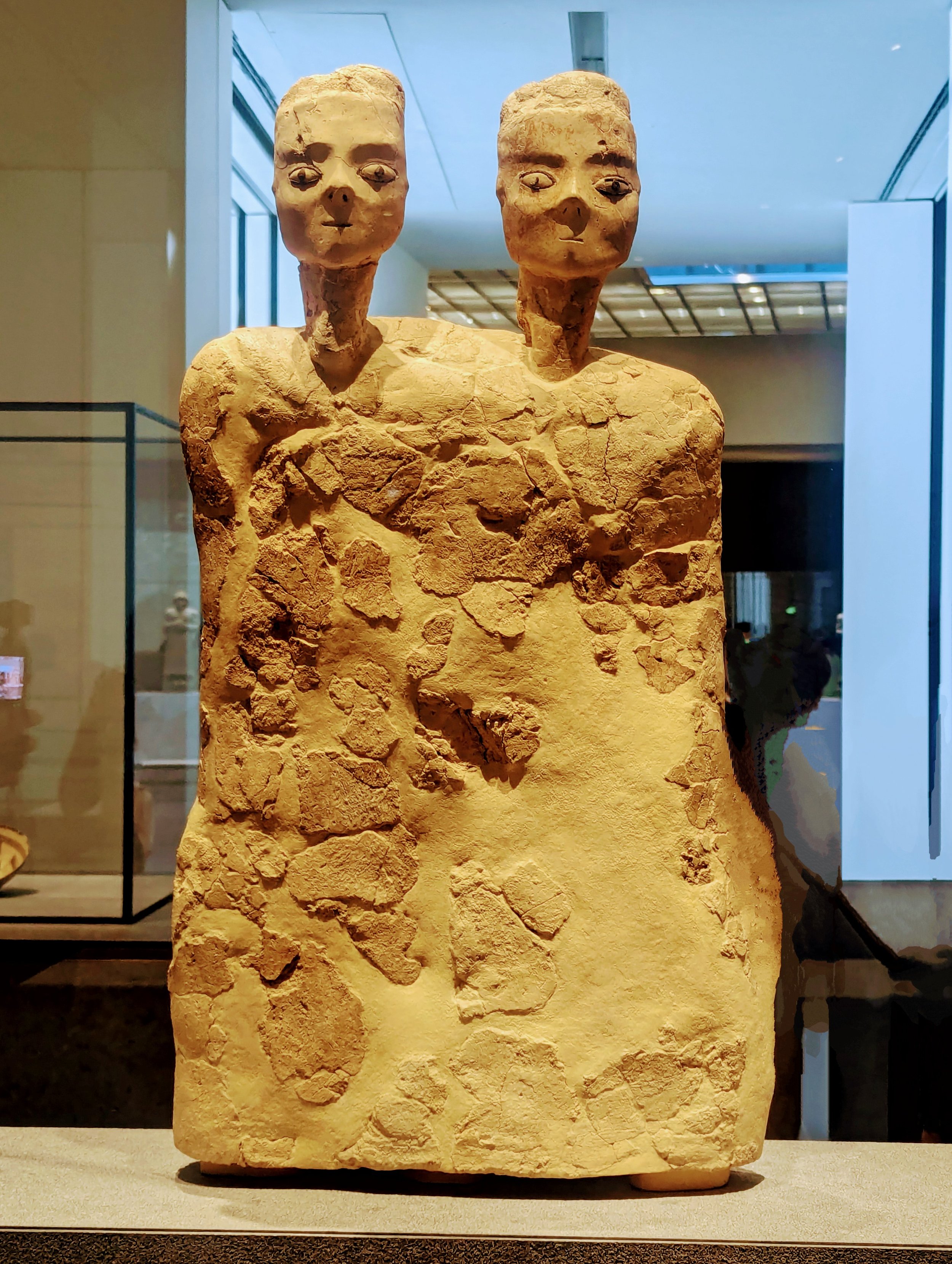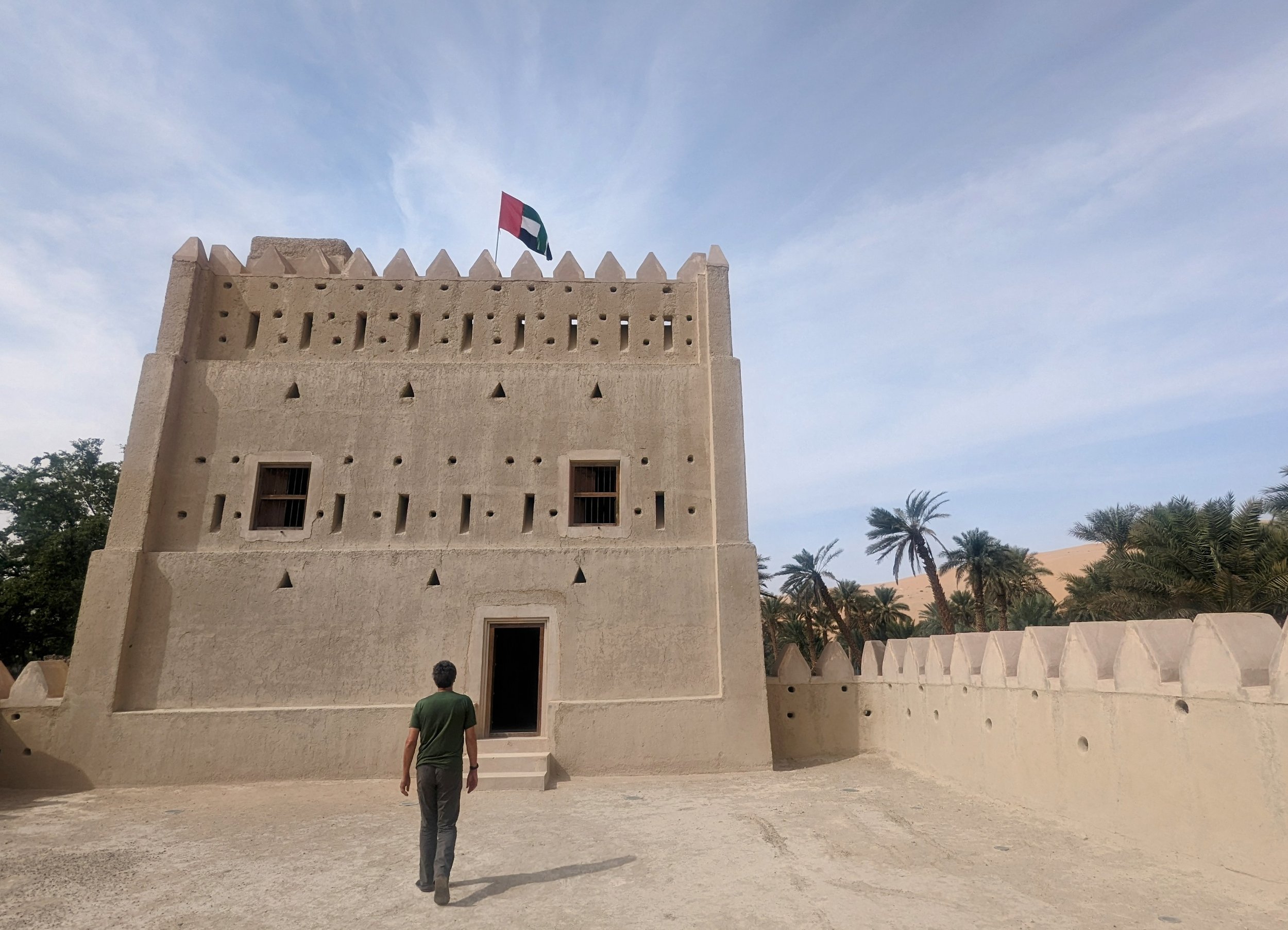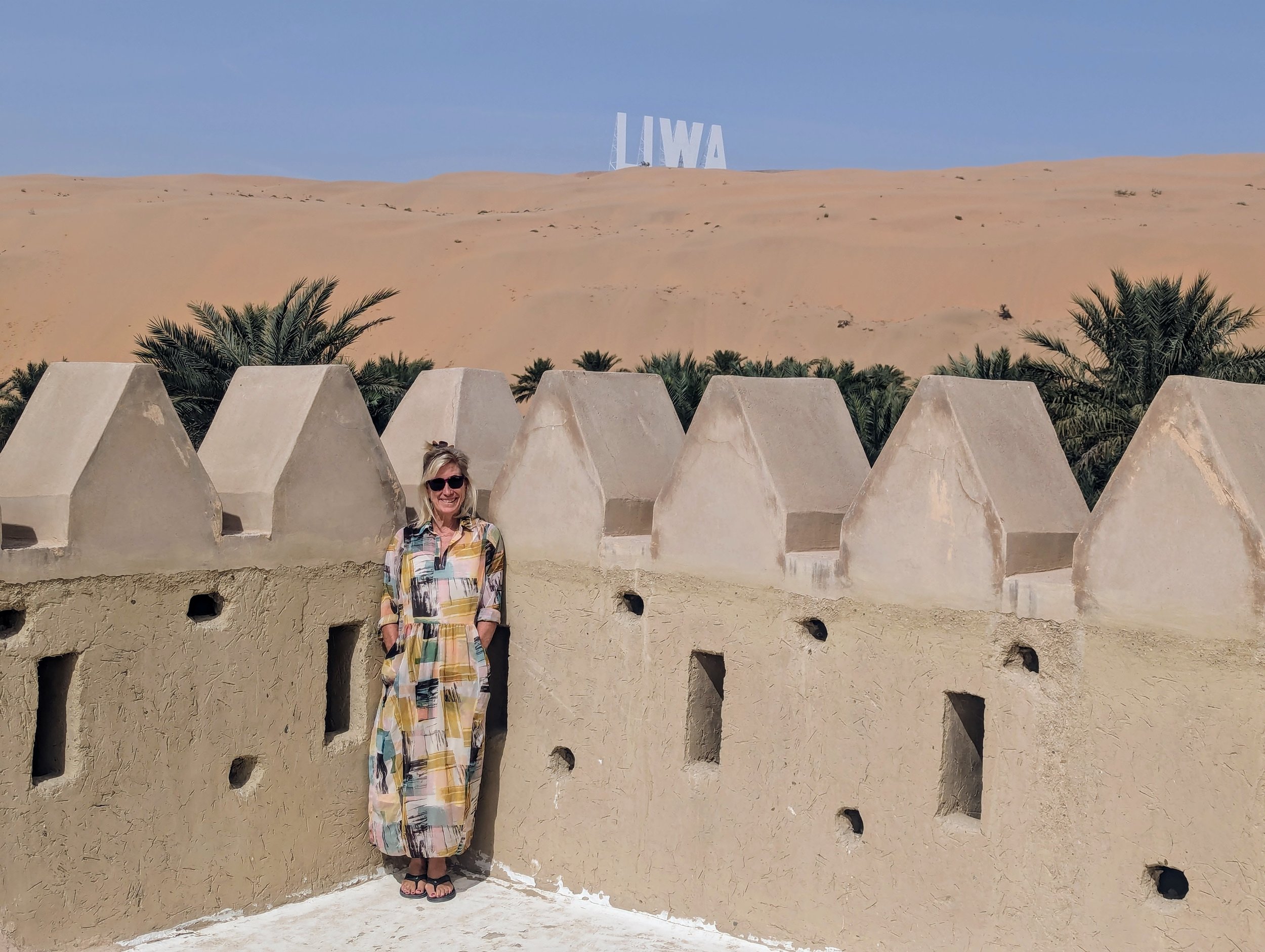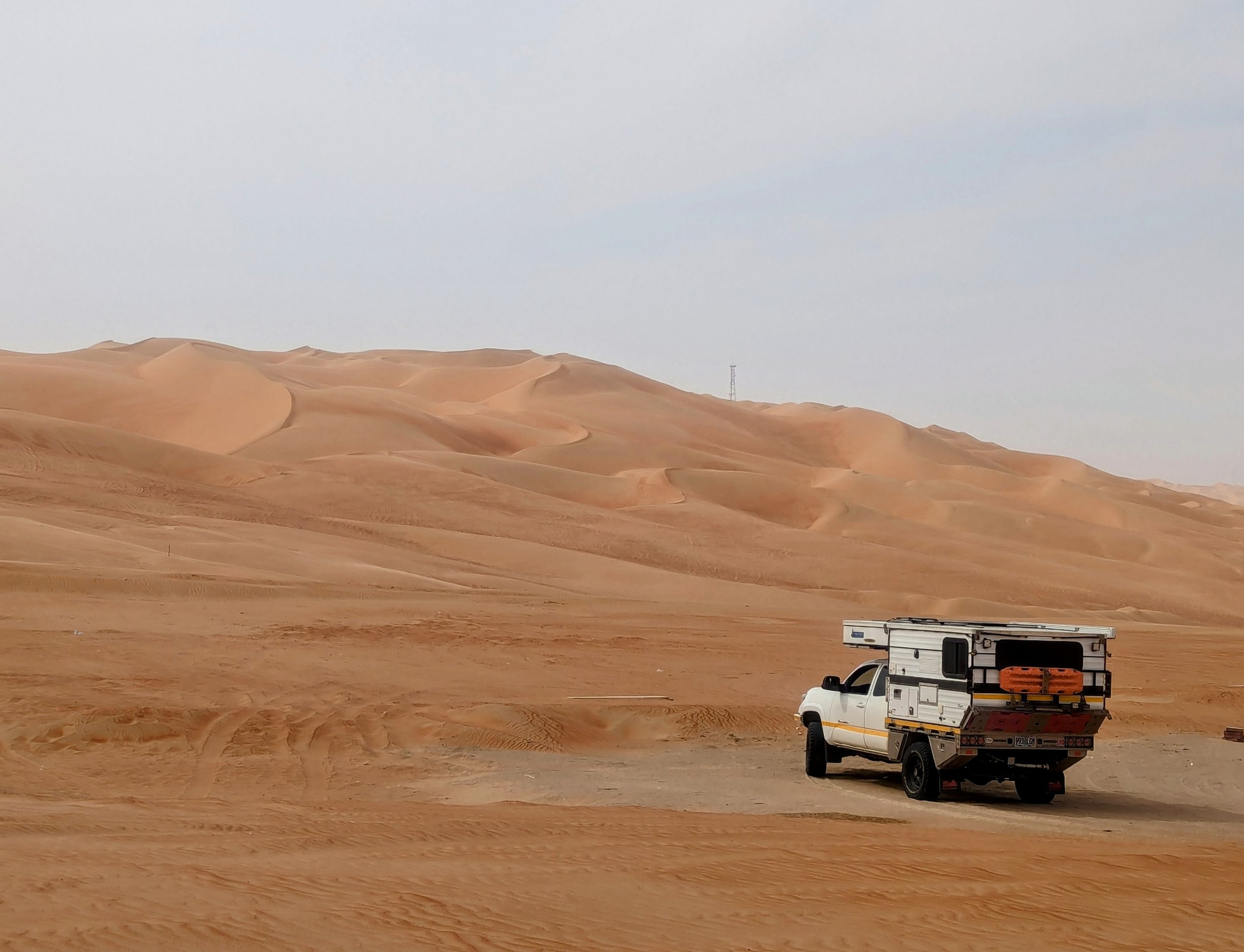United Arab Emirates
Dhafeer Fort - Liwa Oasis
The United Arab Emirates continued our fascination with the Arabian Peninsula. Although it did not quite have the extraordinarily beautiful wild camping spots common in Oman, the country offered the intrigue of huge culturally interesting cities and of course, the Dubai bling.
For the first few days we continued to have our son Trevor with us, as we worked our way toward Dubai where he had a return flight home to Oregon.
First desert camp in the UAE, Trevor tucking his tent behind us in a effort to minimize the wind.
The United Arab Emirates is composed of seven emirates (or states). Each state is ruled by a monarchy. The seven states are united into a country ruled by a president elected from the monarchy, usually the ruler of the Abu Dhabi emirate. Only 12% of the population living in the country are actually “Emirati” with the rest being mostly South Asian immigrants who form a vast working class. Most of our contacts and conversations were with these immigrants. The Emirati receive significant government benefits including land, jobs, health care and education. From our perspective, as outsiders, the Emirati were more inclined to keep to themselves.
Our 1100 mile route through the United Arab Emirates
In the last few decades the government has been working on shifting away from complete reliance on oil and gas. The huge investment in the development of Dubai is a strategic effort to promote tourism. As one of our guides put it the president looked around for a place with no gas or oil and said “let’s build a city there for tourists” and so Dubai was born. It seems to be working, the city is alive with visitors from all over the world. Unlike in the neighboring countries of Oman and Saudi Arabia, in much of the UAE, alcohol is sold in stores, bars and restaurants.
Despite the influx of drinking and immodestly dress international travelers into Dubai, the country still holds its conservative Muslim roots. Outside of the cities people are dressed traditionally and women are completely covered. There are separate praying rooms in mosques and even separate beaches for women. Among the Emirati, polygamy is the norm. When Dawn drove in the country, she was very aware that women were only legally given the right to drive in 2018.
We do regret that we did not have the opportunities for deeper conversations and shared understanding with the people of UAE. Dawn would have loved to know more about the local women’s philosophy but we felt that there was an unseen barrier, especially as short term visitors in the country.
Our first real stop in the UAE was a last mountain trip for Trevor - a drive up to Jebel Jais.
Not everyone in our group was obeying the appropriate footwear sign for hiking
Throughout the UAE we could see the continuing growth of the burgeoning tourism industry. Jebel Jais was a prime example with the mountains being developed with the world’s longest zip line, a bobsled track, picnic areas and viewpoints with restaurants. The upper hiking area infrastructure was finished but the lower one was under construction.
But of course Dawn was prepared with appropriate footwear
Hiking trail at the upper end of the park
The mountains and views were spectacular and the the road to the top steep, curvy and brand new.
Making our way to the end of the accessible road - spot the truck?
Camping at Jebel Jais was allowed at pull outs along the road. Some were paved with food trucks and restrooms, others were basic gravel. We opted for a gravel patch with a view, enjoyed the sunset, had dinner and went to bed with one other car across the lot. Over the next few hours until 2am, cars and trucks full of young UAE men pulled in, music at top volume, loaded with picnic supplies and even a big screen which was set up for a soccer game. Our little camp was surrounded by a raucous party. One of our worst night’s sleep ever, oh well.
Hiking at the lower area at Jebel Jais. Area is under development but we skirted around the excavators and found a great trail.
In the morning, not well rested, we made our way to Dubai.
Kite surfing beach in Dubai
Plaza in front of the Burj Khalifa - tallest building in the world (many superlatives in the UAE)
Our Airbnb apartment came with parking - it was a very tight (1/2”) squeeze but we made it
Mall culture is huge in the UAE - as elsewhere on the Arabian Peninsula where the heat prevents people from being outside much of the year. But in Dubai it is on a whole other level. Malls are so big it is common to see people navigating them in golf carts. In addition to stores from brands all over the world, they house world class restaurants, entertainment centers and even in one, a ski resort.
Enormous aquarium in the Dubai Mall
Fountain inside the Dubai Mall
Taking the boat taxi across one of the many water ways in Dubai
Exploring the old quarter (heavily renovated). Preparing to say “goodbye” to our travel buddy and son, Trevor
And then sadly we sent Trevor on his way back to Oregon, checked out of our Airbnb with clean laundry and returned to camping life.
Camped on the Dubai waterfront
With access to this beautiful canal walk at night
View of the lit up Burj Khalifa from our camper window over dinner
We left the commercial excesses of Dubai to seek out more knowledge about the UAE and its history. Next stop was the neighboring emirate of Sharjah, home to the Museum of Islamic Civilization. More traditional than Dubai, Sharjah was a dry emirate, no alcohol allowed and the atmosphere felt more calm and serious.
Sharjah Waterfront
Throughout the UAE we found beautiful waterfront promenades to walk on - always spotlessly clean and well used by a variety of walkers.
Sharjah Islamic Museum
We learned much more about the Islamic religion in Sharjah, at the Museum of Islamic Civilization which was beautifully laid out and very informative (also free entry if you are over 60 years old!). We keep testing ourselves on the five pillars of Islam to make sure we can remember.
Desert camping outside of Sharjah
And then we stepped back in time at the Mleiha archeological site with its beautiful contemporary museum detailing the history of the migration of people coming from Africa to the Arabian peninsula for the first time.
Mleiha museum - excellent exhibitions about the movement of people from Africa to this region 125,000 years ago
Ancient tomb found in the desert at Mleiha
Then because we always love a wadi, we wound our way to Wadi Shawka for some camping and hiking.
It was a beautiful place but we managed to get ourselves into a stressful situation. After 40 years of hiking together we should have known better. We set off for what we thought was a late afternoon 90 minute walk up the hill, trusting the Gaia app mapped trails to follow a loop back to the truck. The trail back was non-existent and we ended up on a four hour trek back along roads in the dark. We learned that the flashlight app on our phones uses up 8% of battery per hour. We made it, tired but happy in the end.
Beautiful hiking at Wadi Shawka
Wadi Shawka camp
Then we were back to city life and learning about UAE history and culture. Abu Dhabi was a pleasant surprise (those of you who have read other blogs know we are usually grumpy city people). After a year of navigating cities in Africa, we were still amazed with the cities on the Arabian peninsula which all seemed so clean and organized. They featured wide, well lit walking promenades with public art and benches, frequent clean public restrooms, easy parking, and were safe to walk at night, all qualities which we had learned to do without. The cities were designed for both walking and driving and the architecture was varied and beautiful. It was clear what a difference money and planning could make.
But to continue the comparison to Africa a little, we were also feeling a sense of loss related to the warmth and humanity of the people. We missed the big smiles, the laughter, music and camaraderie so common in Africa. We know we are making comparisons in very broad strokes, comparing two enormous and varied regions, but there was something missing. We found ourselves drawn to and having fun with the parking attendants from Kenya (which was our longest conversation in the UAE).
Abu Dhabi Presidential Palace - now a high end hotel
The varied skyline of Abu Dhabi
Art along the coastal promenade
Everywhere a blend of traditional and modern architecture
Old fort downtown, surrounded by skyscrapers
By far the most beautiful architecture we saw was at the Sheik Zayed Grand Mosque in Abu Dhabi. Well set up for tourists, visitors are taken on a guided tour explaining the history and design of the mosque. This was the only place in the UAE where Dawn wore a head scarf and made sure she was completely covered from head to toe (required to visit). The visit and the tour are free but require an advance online booking.
Open courtyard at Sheik Zayed Grand Mosque, also the burial place of the late president, Sheik Zayed
Our lovely guide at the grand mosque
The largest mosque in the country
Our last visit in Abu Dhabi was the Louvre. Yes, same name, in cooperation with the Louvre in Paris. It was the most historically diverse museum we have ever been to, designed to take visitors through time in displays of art and historic artefacts across the world.
The Louvre in Abu Dhabi, set on the water which is integrated into its design
Ancient Jordanian sculpture
Egyptian sculpture
The museum covered the traditions and cultures of the world through its art. We thought it was one of the best designed museums we have ever been to. There were stunningly beautiful religious sculptures from throughout time.
And then, back to the desert!
Desert camp along the way
Red dunes of Liwa
Visit to Dhafeer Fort in Liwa
More dunes!
And that was it for the UAE for us! Next stop, Saudi Arabia. Thank your for reading and coming along on our adventures with us.
